|
There's still two weeks left of the plays, plenty of time to click the button and get yourself some tickets to see some professional theatre. If you buy tickets to three shows you get the fourth show for free, just type in Season in the promotional code box. The Texas Shakespeare Fest: "Where Do They Get Those Costumes?" Great article with video of the costume shop. Costume Department
Designer, Brandon R. McWilliams holds a Bachelors of Fine Arts in Theatre Studies from The University of Texas at Austin and a Master of Fine Arts in Costume Design from the Carnegie Mellon School of Drama. He has designed regionally for the past fifteen years and is the recipient of the Zelma H. Weisfeld USITT Costume Design Award and two-time recipient of the Elizabeth Shrader Kimberly Award in Costume Design. His work has been on display at the Prague Quadrennial ’07, as well as at the Carnegie Mellon University campus in Qatar. He has taught at Carnegie Mellon University, Salisbury University, the University of North Carolina at Charlotte, Louisiana State University and currently heads the costume design program at Texas State University. www.brmcwilliams.com. UPDATE: I sent Brandon a list of questions and he was nice enough to answer them. Here's the transcript of our conversation below: Me: I've been going to TSF for the last three years now, so I have a basic understanding of the rehearsal schedule, build schedule and how much time each show is allotted in the shop. The schedule is insane so kudos to everyone involved for getting so much done in so little time. Brandon: “Thank you, yea it’s a pretty tight schedule” Me: There is one thing I am confused about. I was told three years ago by Nick Jones, who was the shop manager at the time, that the designs were submitted in February with final renderings to the shop in March. What I am confused about is, who is there to begin patterning in March and shopping for fabrics if all the staff seem to be employed at other colleges or in grad school? Who is doing all the preliminary work until everyone else finishes with their own finals? If the shop only has 5 days per show to get the whole thing built with fittings starting on Wednesday, who is doing the pulling and shopping? I'd also love to know how much time you spent in residence during the build compared to how much was accomplished through email or phone calls. Brandon: “I haven’t really noticed any pre-production work done by the shop before the company arrives, but yea, you are right that final designs along with supporting paperwork gets delivered in March. I do all pulling and shopping for the shows with the exception of foundation garments that the shop staff can typically pull. I was in residence for 6 weeks, May 18th through July 3.” Me: Clearly a lot of things were built for both of your shows. Can you point out which pieces were built for the show compared to how much was adapted from pre-existing stock? Brandon: “For Much Ado, it was pretty much fabricated in house and purchased, we did pull the townspeople from their stock, but the rest was built. Cyrano was probably a solid 50/50 at the end of the day.” Me: What I'm especially curious about, having read the costume book they published awhile back and being able to talk to Nick Jones (I got to see the shop and storage three years ago while everyone was on a break for lunch) is this: The original philosophy was to build sturdy period pieces in a neutral color palette that could be used in a lot of different shows and then to keep adding to that collection to amass a really good stock and they've clearly done that over the last 30 years. Brandon: “I’m always surprised at how usable their stock is, I’m not entirely sure that it came from a directive to design in neutrals per say, but it's happened many a times that I’ll need something and you just walk back into the stock and there it is.” Me: But after three years of seeing period pieces in neutral colors I'm wondering when/if more color in the designs is going to happen? Surely they have enough brown and creme things by now. So what were you told, if anything, about color? I have started assuming that anything I see that's an actual color was built for the show and anything that's beige, creme, tan, brown, or navy is pre-existing stock. Brandon: “I’ve never been told that I have to operate in a certain palette when I’ve worked at TSF. Color has always evolved in collaboration with the Director and other Designers.” Me: I see that you did Camelot back in 2013. What was it like coming back? What did you do differently because of your experience earlier? Brandon: “I did, I also did Winter’s Tale that year, it was great coming back, for my 3rd year now. TSF is kind of special and I have always enjoyed my time with them. Coming back in my 2nd and 3rd year was somewhat easier having known how they operate and what actually exists in their stock, its like you are just better prepared having danced the danced before.” Me: I'd love to know what your budget was for both shows. Brandon: “They seem to budget with a lump sum amount rather than in response to the sketch.” Me: Much Ado they've done three times before, Cyrano twice. Was there any conversation like, "Well, we've done it this way before, you need to be different" or the opposite "we have all this stuff from last time in stock, you should use some of it". Brandon: “There is always a bit of comfort in knowing that they have some 30 years of stock to be utilized in various ways, but there really wasn’t any directive given to be like, or different from past productions.” Me: I feel like Raymond Caldwell and John Dodd have had such a long range vision for so long, I am interested to know how much control they exert over the designs. Brandon: “A producer always has that stewardship over the visual language in a way, but I’ve never had Mr. Caldwell or Mr. Dodd exert themselves in a way that was in opposition to the direction of the design of the shows I’ve done at TSF.”
I emailed Ms. Herin (Richard III and The Marvelous Wonderettes) and was fortunate in that she agreed to answer some questions about her involvement in the festival. I found out that she also designed two of the shows we saw last year, Henry V and Carousel. Here's the link to last year's blog on the Festival so you can see more of her work. Texas Shakespeare Festival 2016 Christopher Roton, the scenic designer, also designed all the shows last year. When you click on the link you'll notice that it's not up to my usual descriptive standards and I apologize for that. My mom died last July after a long illness and it's a miracle I got anything published at all. That's why I was surprised to find out that both Angelina and Christopher had designed the shows last year--my brain just wasn't taking in any information at the time. Back to the interview with Ms. Herrin: "The design process for the shows follows what I'd consider an industry standard for professional summer theaters. The designs begin in late fall, around mid-November, when conversations with the directors begin. At this point, I've been officially engaged as a designer, received copies of the scripts, read the scripts, and done some basic analysis on the texts and characters. I have a general sense of the plays, the playwrights intentions, and can discuss the characters with a certain level of depth and understanding. I like to have all this completed before my initial conversation with the director. Conversations with the director help to give my research focus, sometimes there's a concept that needs to be reconciled with the script, and the designers need to discuss and collaborate on the overall production. The production needs to be unified so we (the director and designers) need to communicate regularly, especially at the initial stages. Between these initial conversations and the mid-February initial design deadline, I do A LOT of research and sketches. Thanks to the Internet, it's pretty easy to share my ideas and receive feedback in an expedient manner. Sketches are often modified, especially as the overall costume design takes shape and a clearer vision is realized. Final designs, which means color renderings of each character and any costume changes they undergo, are due in mid-March. Renderings include hair or wigs and makeup details, which can include tattoos, piercings, or scars in addition to basic makeup choices. This deadline may seem rather early but these designs need to be reviewed by the director of the show, the Artistic Director, and the Costume Shop Manager. While the directors of my individual shows and I may only be interested in the unification of our particular production, the Artistic Director needs to evaluate whether the season is balanced in terms of harmony and contrast; the Costume Shop Manager needs to consider the technical and logistical requirements of the season. Furthermore, costume renderings are often used in publicity materials that are created in advance of the company arriving in Kilgore. Construction of the costumes does not begin until late May when the entire company is in residence. A final design packet is due in early May. This packet includes all the accompanying paperwork in addition to the costume renderings. Paperwork can include dressing lists, build lists, character/scene breakdowns, quick change plots, technical drawings depicting how garments should be patterned, fabric swatch cards, and comprehensive garment lists. The build period is brief and designers need to be completely prepared when they arrive." Scenic Department
I don't know any of the scene shop people, but clearly they have a sense of humor. And their TD/Shop Foreman is FEMALE! Look at all those men so happy to work for a woman! I hope the matching Hawaiian shirts are their actual shop uniforms. Even if there is only one of these shirts running around, the fact that they all wore it for the publicity photos makes me smile. There's a group of people who know how to have fun. CyranoWe saw Cyrano Friday matinee. The set design was lovely and very versatile, having to be 5 different locations: the Hotel Burgundy, Rageneau's patisserie, Roxanne's abode, the battle, and the convent. Costume GalleryPhotography by TSF staff. I designed Cyrano in graduate school so I'm pretty familiar with the play. It's a huge costume build with many layers of foundation garments for the ladies in order to achieve the correct Cavalier silhouette. The men all need lace collars and cuffs, capes, hats with feathers, swords and belts, and boots. There's the entire Gascon regiment that needs uniforms, several Musketeers, and three nuns. Plus all the other characters. That's a lot of changes. Here's what Brandon McWilliams had to say about Cyrano: “Ben Reigel (the director) came to the table with such experience with the play that we quickly decided it was a period piece that would be lived in in such a way that it wasn’t about costumes, but more about clothes that are lived in in a way. There were many discoveries along the way as the process seemed to be a bit more organic on this show and a lot was created based around an existing stock of clothing as opposed to building a great deal of items.” Here's Cyrano. He keeps this look through most of the show. His nose is clearly a prosthetic. It's a bit large, but not outrageously so. Here's Cyrano's duel with Valvert. You can see the background characters in their lace collars and cuffs. Here's Christian and the rest of the Gascons at Rageneau's patisserie. They clearly identify as a unit even though their "uniforms" are not identical. Two or perhaps three different fabrics were used to create doublets with separating sleeves that laced in. Both Christian and Cyrano have unique costumes that are similar to the Gascon uniform but not identical. Here's the gown Roxanne wears in both Act II and III. It's a yellow bodice with overskirt worn over a blue underskirt. it has white sleeves and trim. Here's her dress from Act I, seen here in Act IV at the battle with the Gascons. Here's the black dress she wears in the convent, still in mourning for Christian. Richard IIIIn case you are not up on your English Civil War history, here's a wonderful video that the Festival linked to on You Tube that explains one hundred years of bloody treason, betrayal, murder, and mayhem for you in less than 12 minutes. Richard III was directed by Stephen Wyman who played Shylock last year in Merchant of Venice as well as directed Henry V. Mr. Wyman said that directing Henry V last year made it easier for him to approach directing Richard III this year as he was already familiar with the space and with what kind of audience he could expect. Richard III is the second longest of all of Shakespeare's plays and Mr. Wyman didn't feel that the audience would thank him for presenting a four hour or longer version of the complete text. Discussing his version of the show he said, "You have to know where you're going" which meant that he had to cut out everything in the script that didn't take him there. To that end, he began cutting the script early on and eventually went through six revisions before he was happy with the final version. Mr. Wyman didn't just cut lines out, he also added in portions of an adapted version by Colley Cibber that was popular a hundred years after Shakespeare's version premiered. He said that he incorporated those bits of text into his production because he felt that Lady Anne's character arc needed to be completed and Colley Cibber's version did just that. The added scenes showed Lady Anne lamenting her marriage to Richard, their fierce argument about it, and later her suicide. One of the major elements he wanted to highlight with his version was the "portrait of the kind of people that would allow a person like Richard to come to power", which meant that it was vitally important for the play to not just be about watching a great actor chew the scenery but about all of the other characters and their backstory; that they need to exist in a world in which superstition and curses are real. His design concept was "expressionistic, grotesque, and eccentric" to expose the inner torment of each character to the audience and to wear it on the outside of their bodies like clothing. He stressed that he couldn't make subtle choices because as we are an American audience we don't have strong associations with all these characters the way an English audience would, being much more intimately familiar with the history of the War of the Roses. The director worried that (unlike Henry V last year) the audience would be unwilling to go on this journey with him since it was a descent into a hellish nightmare rather than a glorious journey toward victory. He needn't have worried. The direction, acting, and design of the show were compelling enough to keep our attention riveted on his goal for the entire two and a half hours. The set was designed by Christopher Roton. The concept he was given was Wyman wanted the world of the play to be a "living, breathing nightmare". You probably can't tell from the photos, but the wooden supports have runes carved into them and the platforms seem to be mortared together with human skulls. There were rusty hooks on chains hanging from the ceiling along with metal chandeliers. The whole atmosphere was one of catacombs turned torture chamber. I felt like I was in The Cask of Amontillado--as each successive victim was murdered, I felt walled up in this tomb of a set. Here's a good one of the skulls in the mortar. The lights and projections were designed by Jeff Greenberg. As you can see from the "curtain warmer" photos, projections were used throughout the show to enhance the "living, breathing, nightmare" concept that Mr. Wyman wanted. The Kilgore College theatre department had just purchased a new projection system so Adobe After Effects was used to project the faces of Richard's ghosts onto the back drop during Richard's nightmare before the battle of Bosworth Field. Pre-show projections were the title of the show superimposed on three femur bones, while the intermission projection was Richard's skeleton from the car-park superimposed over the skeleton of a boar, Richard's sigil. The com system went down right after the curtain speech on the night we saw it. After what seemed like way too long but was probably only a few minutes, the announcement went out that the show had been delayed due to technical difficulties and it would be just a few more minutes. We found out in the panel the next morning that they never did get the system up and running and had to call all the cues on their cell phones! I have no idea how that even worked, but it did, and I couldn't even tell anything was wrong. The problem turned out to be a short in a wire that they replaced the next day. Michael Redondo must be the best stage manager in the history of ever because we also found out the next day that this version of Richard had the most cues he's ever had to call in a show. I can't imagine doing that on cell phones. Way to go, Michael! Costume GalleryPhotography by TSF staff. I designed Richard III back in 1999, so I know from experience that it's a huge show! When we did it at MCC, we incorporated the end of Henry VI part 3-- the Battle of Tewkesbury--in which Margaret is captured, and Prince Edward and Henry VI are killed, to give our audience some context for what they were about to see. In Wyman's version we get the scene where Richard stabs Henry VI in the Tower (from Henry VI part 3) before we get the scene where he woos Anne over Henry's corpse. In this version Henry's corpse bled spontaneously just like in the text: "O gentlemen, see, see dead Henry's wounds Open their congeal'd mouths and bleed afresh!" It was a great bit of theatrical magic that took the audience by surprise. In the panel discussion, we were told how they did it. The corpse was rigged with blood bags and tubing with holes. The actors who were bearing the corpse had the trigger for the release mechanism in the handles of the bier. The costumes were designed by Angelina Herrin. Here's what she had to say about Mr. Wyman's concept: "The concept for Richard III was "1480 meets 'Mad Max' and 'Halloween.'" Mr. Wyman wanted the costumes to reflect the inner corruption of the characters. There is something rotten and not quite right in this world and costumes are the outer manifestation on this festering. The costumes needed to walk the line between contemporary and Late Gothic silhouettes. This was achieved through mixing contemporary materials with older silhouettes and or manipulating a contemporary garment. Since the play is about the War of the Roses, there are a lot of roses and insignia to assist the audience in identifying who is aligned together and who is in power. (We go through four kings during the play.) Lesser characters, like the soldiers and messenger, switch out the insignia on their costumes to indicate this change of power. I incorporated a lot of spikes into the clothing - my version of rose thorns. Everyone has some sort of thorn or armour. A secondary goal was to play with proportion and to support the sense of unease created in the scenic design. One example is the women's veils are a bit too long and may concern some viewers - will they catch on the stage or get pulled off? why are they such odd colors? Again, the spikes create a sense of danger: when Richard is assaulting Queen Elizabeth the audience may actually feel concern for Richard as Elizabeth swings her bejeweled pauldrons, complete with 5" spikes, toward his face and neck. In terms of what was built vs. what was pulled from stock, it's a 45-55 ratio. All of the primary women, Richard's costumes, and several of the jerkins and capes were built. Headdresses for the women was also built. I painted all the insignia found on Richard, the messenger, and the soldiers. Heavy modifications were done to the motorcycle jackets and vests. The armour was modified or constructed then painted and distressed for this show, including the spiked knee pads. The items pulled from stock or purchased were generally pants, undershirts, capes, puffy vests, and accessories (gloves, shoes, studded belts). We also employed the skills of some wonderful artisans to build the Duchess of York's scaled pauldrons, Lady Anne's crown, Richard's crown, Queen Margaret's headdress, and some of the leather jerkins and leather armour worn by Catesby. I designed Henry V last year and chose to incorporate several pieces from that show into Richard III, although the concepts were different, I found the pieces I chose from Henry V added some depth and personal meaning to the design." As Ms. Herrin said, most of the characters had some pieces of armor on their costumes and there was a lot of black leather in the show. Here is what Richard wore in most of the play. I liked the choice of putting Richard's weak arm in armor to protect it and it seemed that the paldron was helping to keep his "withered" forearm from dangling with the straps and chains holding it up. I felt sorry for his left boot. I imagine that the pair will be trashed after the show closes. The chorus had skull balaclavas that covered just the lower halves of their faces. The actor playing Brakenbury the Jailer, Domonique Champion, said that he felt they symbolized the "power of death" that was always following you as well as always ahead of you, impossible to escape. In the background you can see the ever-present chorus members in their skull balaclavas. As the director said, the women were the important part of this show and Richard's relationships to them had to be developed. We see Richard's evil deeds better by the cruelty he inflicts on the women in his life. Elizabeth is the wife of Richard's older brother Edward IV, who's just won the crown by defeating Henry VI at the Battle of Tewksbury. Here's how Queen Elizabeth starts the show. Notice the crystal pauldrons with the 5" spikes. They are difficult to see in the photo, but from the second row, they looked deadly. Also, notice the use of white crown and lining accents on the dark gown. The white rose is the symbol of the York House. Here's her change into a black mourning gown after Edward dies from grief over having to order his brother George's execution. George was rumored to be rebelling against Edward. Richard started the rumor of course. In a fit of sentimentality, Edward declared a stay of execution and told Richard to deliver the message. Richard lied and said he was too late. Later Richard has both her brother, Rivers, and her son from her previous marriage, Grey, arrested and executed for plotting against him. They actually were plotting against him. Elizabeth takes her daughters to seek sanctuary with Lord Hastings, but Richard also has him executed for being a traitor. Then Richard declares her two surviving sons from her marriage to Edward, illegitimate, has them locked up in the tower, never to be seen again. Notice she keeps the crystal pauldrons on, but loses the crown. Also, she loses all the white accents. Richard's mother is the Duchess of York, Cecilly Neville. Shakespeare portrays her as having deep affection for her sons Edward and George, but none for Richard. She sees his physical deformity as a "false glass that grieves me when I see my shame in him" and blames herself for it. Naturally she is horrified when Richard manipulates Edward into having George executed. Once her grandsons, the Princes, disappear in the Tower, she blames Richard for their deaths and curses him: "Bloody thou art, Bloody will be thy end!" She wears this deep burgundy velvet gown with scale mail pauldrons and a white underskirt. Margaret of Anjou was the wife to Henry VI and the mother of Prince Edward. No mere decorative Queen she, Margaret actually led the Lancastrian army with her husband at the Battle of Tewksbury, in which her son was killed by Richard before her very eyes. Richard captures Henry VI and later kills him in a fit of rage in the Tower. After the Battle of Tewksbury, Richard has her taken prisoner and keeps her at court so he can keep an eye on her. Margaret has lost her husband, her son, her sanity, her crown, and her freedom all in one day, and all because of Richard. Shakespeare also has her practicing witchcraft, a plot device that Mr. Wyman made much use of. She curses Richard and all the other Yorkist nobles who had a hand in the downfall of the House of Lancaster, and Cassandra-like, all of her curses come to pass, each man betrayed and murdered by Richard. Richard also dies at the hand of the future King of England, Henry Tudor, at the Battle of Bosworth. In her first entrance, she is wearing what I would describe as an Evil Queen ensemble, a black horned headdress and veil with a red cape with silver/crystal pauldron only on one shoulder. In the second photo, she loses the cape and we see that she's wearing a red corset over a black gown. It's a very striking costume. I wish someone had gotten a better photo of it under normal lighting The third photo is her influencing Richard's dreams the night before the battle, giving him the nightmare of seeing all the victims of his murderous bid for power. She was in shadow so I'm not sure what she was wearing but it looks like she's just thrown a darker colored cape over her other costume. Anne Woodville was the wife of Prince Edward and Margaret's daughter in law. Anne has lost both her husband and father-in law because of Richard. She first meets Richard while accompanying Henry VI's corpse to chapel. It is in this scene that Richard, a master of manipulation, tells her that he's killed her father in law and husband out of a desperation to marry her, because he's so in love with her. He offers his sword to her so that she can take her revenge and kill him, but she can't do it, being a Christian and not capable of murder. He then skillfully talks her into marrying him. It's not like she really had any other options. So she says yes and joins House York. Anne is wearing a heavy grey velvet cape with black accents. Her veil is red. You can't really tell in this photo, but the rose appliqués on her cape have red beadwork on the black backgrounds. The House of Lancaster's symbol was the red rose. Here's what's under the heavy velvet cape. The third photo is the gown she wears in the emotional scene by Colley Cibber where she confronts Richard about their failure of a marriage, and then later commits suicide. The men wore costumes too, I didn't want you to think I was ignoring them. Richard III Panel DiscussionThe panel was held Saturday morning after the Friday evening show. Many interesting questions were brought up and we were so fortunate to have the director on hand to answer them. I was particularly curious about the concept for the show especially as it related to the unusual costume and scenic design. This play was rehearsed six days in total. All the actors began rehearsals with their lines memorized. Micah Goodding, who played Richard, had been cast before last year's season closed and was able to start working on his character in September. Micah's take on playing Richard was that he (Richard) does genuinely care about (some) people right up until he's through with them. The scene with Lady Anne is especially troubling for a lot of people who work on this play. Why does she end up married to the man who murdered both her husband and father-in-law? It seems beyond belief that she could be manipulated like that. Micah wanted to show a version of Richard in which Anne's seemingly improbable choice would make sense. He felt he had to make Richard vulnerable enough in that moment so that Anne would accept him. This choice was further supported by the director's concept that their world had become such a nightmare, that being married to Richard was the safest option for her, the widow of his enemies, than remaining unmarried and vulnerable. It was wonderful to hear Mr. Wyman talk about the importance of the female characters in the play. I'm so glad we got to hear from Lisa Crosby Wipperling, who played Margaret, on her perspective of her importance in the play, her curse on Richard, and her conjuring the dead to influence the outcome of the battle. She said that her character realized that the other women weren't ready to go to her side yet because they were still grieving for the Princes, so that's why she needed to conjure the ghosts in order to bring Richard down. We weren't given any child actors to play the Princes in this version. I was told it's notoriously difficult to find child actors who can adhere to the crazy rehearsal schedule that the festival must keep. I felt their absence most keenly in the scene where Cecilly, Elizabeth, Margaret, and Anne were asking to see them in the Tower only to be denied by Brakenbury the Jailer. The women were grieving for faces that I had never seen. It was an emotional cue that was missed. Matthew Simpson, festival director, was hosting the panel and also revealed that each season is built around one show and that Richard was the anchor play. He also said that usually the musical is the last piece of the puzzle, but this year when they chose Marvelous Wonderettes (which only has a cast of 4), they replaced the other non-Shakespeare with Cyrano which had a much larger cast. The Marvelous WonderettesI had never even heard of this musical when we saw it on Saturday at the matinee. According to the lighting designer, Jeff Greenberg, this show had the most lighting cues. Costume GalleryPhotography by TSF staff. Costumes designed by Angelina Herrin again. Here's what she had to say about this show. "The Marvelous Wonderettes is small, sweet musical. I think it's one of those shows that you have to experience rather than read or listen to at home. The audience is the fifth performer in this show. The key, in terms of the costume design, is to not reduce the characters to stereotypes. The costume designer needs to do character analysis and approach the design with a subtle hand or the costumes will cease to look like actual clothing and will indeed become costumes. For this production, the director and I decided to approach the first set of costumes - 1958 prom - with a muted/pastel palette and some sense of modesty. The dresses needed to look period appropriate, reflect the adolescent tastes of the characters, and look like they could have been sewn by one of the characters (as the dialogue dictates). Since the characters are trying to portray themselves as a signing group, I sought to create some unity in the costumes by giving the characters matching footwear and corsages. They all wear white gloves as well." "Moving into Act Two - 1968, a 10-year reunion - the characters are a bit more mature and have more clearly defined personalities and tastes. White is still used as a unifying factor - this time it's the go-go boots - but the costumes are less unified, a reflection of the women growing apart. The color palette for this act is more saturated has more diverse textures. Most of the hair and makeup is reflective of internal character growth; Suzy is the only character with similar hair and makeup in both acts, reflective of her minor character growth." Much Ado About NothingI've done Much Ado at MCC in 2003. I'm a big fan of the Branaugh film. We saw it Saturday evening. The scenic design was amazing. it really felt like an Italian villa--colorful and lush. I was shocked to find out that there was really water in the fountain. Couldn't believe Beatrice got wet when she fell in! And I was curious about how the balconies were built to support the weight of the actors crawling up them and then standing out there when the one on stage right only seemed to be supported on three sides and the one on stage left barely seemed supported at all. Likewise the curved staircase that didn't seem supported at all, but just magically hung in mid-air. What a clever display of safe building techniques. Costume GalleryWhen I designed Much Ado for MCC back in 2003, the Branagh film was 10 years old. We weren't supposed to doing it as our season finale that year; the last show was supposed to have been Tony and Tina's Wedding. But there was a big kerfuffle about the rights, which got pulled, and at the same time, that was the year that another big kerfuffle happened to the state budget and MCC (and I assume all the other Texas colleges) had to give back $1 million to the state. So we were left at the end of the season with no show and no money to do it with. It was decided rather than do no show, we'd do a show that didn't require us to pay for rights and one that we could do with stock costumes and scenery. Several Shakespeares and Greek tragedies were suggested and Much Ado was the winning title. It's a charming play that I never get tired of. Photography by TSF staff.
Here's what Brandon McWilliams had to say about Much Ado: “George Judy (the director) and I had worked together quite a bit over the years so coming into Much Ado was almost like having lunch with an old friend in a way. He is incredibly articulate and super organized in how he stewards his vision. I also think there was an established sense of trust having worked together before. We wanted to create a romantic silhouette, with elements from a variety of period really, so no one is going home with marks for authenticity here really, we pulled from Renaissance all the way to Regency in a way. But at the core was this desire to really depict these three various groups of people in this seaside Italian village."
1 Comment
Neil Gaiman is one of my favorite authors. Good Omens was the second book by him I ever bought. The first thing I ever read by him was Don't Panic (about Douglas Adams, another of my favorite authors) that I read sometime after finishing The Hitchhiker's Guide trilogy but before Mostly Harmless came out in 1992. I adored Douglas Adams and watched the BBC television series of Hitchhiker's Guide on PBS whenever it came on. So although Don't Panic sat on one of my various bookshelves of every domicile in every city I have ever lived in, prominently displayed and well-thumbed, it was another 20 years before I read another book by Neil Gaiman. I made a friend in Waco who loved the Sandman comics, Neverwhere, and Terry Pratchett, who recommended Good Omens and the Discworld series to me at the same time way back somewhere in between 2006-08. Thanks Amanda! I read Good Omens first, LOVED IT, then immediately purposed to rent every Discworld book I could get from my local library system and read them all, as much as I could, in publication order, because I'm OCD like that. In between Discworld books, when the library didn't have them or I couldn't find them at Half Price Books in Austin, I'd try to read some more of Neil Gaiman. The third book I read was Neverwhere because Amanda just loved it and I read in order of publication date, because of the aforementioned OCD. The first time I read it, it was waaaay too dark for me. In retrospect, that may have been because I was reading it immediately following my divorce and the same week that my son had been attacked by a dog and had to have 23 stitches in his face. Not a good time to read a book like Neverwhere. In between my quest for more Discworld books I also read Stardust, American Gods, and Anansi Boys, but not Coraline. Being a newly divorced parent of a small child, I felt (or maybe I was warned by Amanda or possibly the movie preview) that this wouldn't sit well with my current state of mind so I avoided it and skipped ahead to Anansi Boys which made more sense it being a sort of sequel to American Gods. At some point maybe around 2012 I finally caught up to Sir Terry and had read all 45 previously published Discworld books and had just finished The Graveyard Book by Neil. I was fine with a baby boy's parents being murdered by that point, my son was 9 and the dog attack had been several years earlier. I was also happily re-married to another Neil Gaiman, Terry Pratchett, and Douglas Adams fan, so we would get the books and then pass them back and forth. My husband was always better at keeping up with what new books were being published and when, so we always had the new ones right away. While waiting for Neil to publish more fiction, I read his short stories, the Sandman graphic novels, and his non-fiction--The View From the Cheap Seats, which I particularly enjoyed. I finally got around to reading Coraline last summer and it wasn't nearly as bad as I was afraid it was going to be all those years ago. Or maybe it's just that the kids were so much older now. When you're a new parent, everything makes you cry. I then gave it to my 13 year old "chicks dig scars" son to read and he really liked it. He has a thing for dark and grotesque. So then I went back and reread Neverwhere and it was exactly as dark as I remembered but it wasn't nearly as gross the second time plus I finally understood what it was really about. I have now read Ocean at the End of the Lane, which made me cry, Odd and the Frost Giants, and am finally starting on Norse Mythology, all of which were read by my husband first and then passed to me. Despite my best efforts, I still haven't read everything Neil has written, but I am trying. We got M for Magic on CD and listened to it on our spring break trip to the Odessa Shakespeare Festival. So if you love Neil Gaiman already, I'll tell you what you missed. If you aren't familiar with his work, then most of this won't make any damn sense. Go to your nearest library or bookshop and procure Good Omens immediately if not sooner. Then, once you've finished, come back here and read the rest of this blog. So, Neil Gaiman fans, (I'm assuming if you're reading past the photo you have at least a passing familiarity with his work) here's what #Neilhimself talked about for several hours. There were questions cards so mostly he just answered questions and read stories in between questions. He talked about writing Don't Panic with Douglas Adams and their relationship but spent more time talking about writing Good Omens with Terry Pratchett. I've heard/read a lot about how they met, what it was like to work together, lots of funny little anecdotes before. Neil talks about Terry quite often. I didn't know that Terry willed him one of his hats. He doesn't wear it because he says he looks rubbish in hats, but that if someone were making a film of a Jewish archaeologist fighting Nazis, he would come prepared with his hat for auditions and he would look the part. Here's a rather long video where you can hear him talk way more in depth about Terry Pratchett just three days after Sir Terry's death. He also talked a little bit about his writing process. He uses different pens with differently coloured inks so that each day's writing is done in a different color. He does that so he can go back over time and see how productive he had been, or not. I would think it would also help track down bits that you wanted to go back to or fix because if you could remember what day you'd come up with that new bit, all you'd have to do is go back and find that color ink. It seems like that would be a real time saver. He spent a lot of time talking about how writer's block is not a thing. You can get stuck, but that's an internal thing you can fix by taking some time off from that project and then switching to a different project. The phrase "Writer's Block" seems to him to be an external force that you have no control over. There is no external force that prevents writers from writing, so stop whining about it, and write something else until you figure out where the story you're stuck on needs to go next. That's his advice. He read several short stories from Trigger Warning: "July" from "A Calendar of Tales", "Adventure Story" which he wrote for American Life magazine but they rejected because they said it was "too silly" and asked for a non-fiction piece instead, and "In Relig Odhrain". I haven't read Trigger Warning yet but I quite liked these pieces. Here's him reading "In Relig Odhrain" at an Amanda Palmer show in Tel Aviv in 2013. This is Neil talking about how "A Calendar of Tales" came into being and ends with him reading "July". I love the imagery in this piece. He read "Freya's Strange Wedding" from Norse Mythology. Who knew Thor was an idiot? I didn't because I haven't read it yet. Here's Neil promoting Norse Mythology on The Wall Street Journal Cafe. He talks about how he came to rewrite these tales and how Thor and Loki differ from the Marvel comics versions. Neil read two deleted scenes from the screenplay that he's writing for Good Omens which is being done on Amazon, like American Gods on STARZ, with a big American budget, unlike the BBC. Until that drops, you'll have to be satisfied with the radio play. The deleted scenes were both set in Aziraphalel's bookshop, one in the past, and the other in the present day of the story. In case you're a big fan of Starz's American Gods, and who's not?, he said he's quite pleased with the show and where it's going even if it is a bit different from the book. He's OK with it being a bit different. He's more than OK with the big budget. Season Two will be ten episodes and will drop on April 29, 2018 (probably). In case you haven't seen Season One yet, here's the trailer. And, maybe even bigger news: Yes, there will be Neverwhere sequel and in fact, he's four chapters in. He said in February in The Guardian, that it would be called The Seven Sisters. In case you didn't know, the BBC did a television series of Neverwhere back in 1996 of 6 episodes and you can watch all of them on YouTube. Here's the official trailer. Neil read "The Day the Saucers Came" which he told us is often read at weddings, which surprised him to find out. I hadn't read it before, so I was also wondering why anyone would read this at weddings until he got to the end. This is a fan-made animation with Neil reading the story as narration. It's quite good. He was asked what was it like every day to be "Neil fucking Gaiman". He said that having a family keeps him grounded. The morning he found out his new book was the #1 best seller that week, his wife said, "Wonderful. Now take out the trash". Other things that are good for keeping your sense of perspective are babies that puke on you, cats that disdain you, but not dogs because they worship you even when you're rubbish.
In case you missed the earlier posts on this topic, here's the links to them. They will open in a new page. PART ONE: COMIC BOOKS PART TWO: THE ORIGIN OF THE SUPER SUIT PART THREE: DC UNIVERSE Before we can even start talking about individual characters, I have to deal with the fact that Marvel studios sold the screen rights to their characters off to other studios way back in the 1990's and for the last 10 years or so have been desperately trying to get them back. The Geek Twins made this handy-dandy visual guide so that you can refer to it if/when you get confused as we go on this supersuit journey together. Stupid Marvel! Fantastic Four FranchiseThe Fantastic Four are Silver Age superheros first appearing in 1961. Reed Richards, Susan Storm, Johnny Storm, and Ben Grimm were exposed to cosmic radiation while on a scientific mission of space exploration. Reed became super-stretchy and called himself Mr. Fantastic. Sue became invisible and able throw a defensive shield around an item or person. and called herself Invisible Woman. Johnny can become fire and has the power of flight, calling himself The Human Torch. Ben becomes an orange rock monster and calls himself The Thing. Of the four, he's the only one who is permanently his super persona, being unable to change back into his human form. Eventually Reed and Sue get married and have two children Franklin and Valeria. Their costumes traditionally are a medium blue jumpsuit with black collars, belts, boots, and gloves, with the number 4 on the chest. Mr. Fantastic's suit stretches with him, Johnny's always survives the fire, Sue's turns invisible with her, and Ben only wears the pants because the shirt was too constricting. The collars become wider, skinnier, and then wider again, and sometimes they are white rather than black. And, if you weren't already a fan, this is the team that The Incredibles are based on. Timeline of Comic CostumesSource: Comicbook.com: "Unstable Fashion Sense Part 1: The History of Fantastic Four's Costumes in the Comics" Live Action AppearancesThe Fantastic Four, 1994 Reve Richards Fantastic Four, 2005 Jose Fernandez Fantastic Four: Rise of the Silver Surfer 2007 Mary E. Vogt Fantastic Four, 2015 George L. Little Gallery of Costume DesignMarvel sold the film rights to Twentieth Century Fox. Unlike the 1990 Captain America film that finally got released straight to video after two years, the 1994 Fantastic Four was never going to be released when they filmed it. Fox only made the movie to keep the rights. I bet Reve Richards was super pissed when he found out. All that hard work and no one will ever see it. And it's too bad because at least from this one photo, they look pretty good. These costumes are based on the 1983 "Negative Zone" run. Unfortunately, Ben Grimm's The Thing prosthetics make him look more like a prehistoric lizard monster rather than the big orange rock monster we all know and love. On to the next iteration. First, a word about casting choices. Don't cast a Latina actress and then white-wash her to make her look like Chris Evans' sister. That was a bad decision. This is the only time where you should cast an actual white girl. I'm looking at you Doctor Strange casting director. The best thing about these movies is The Thing. Michael Chiklis is a great Ben Grimm. Other than that, these are weak movies. I watched them both when they came out and there was just nothing that made me want to go see them again. Let's talk about the supersuits in the first two movies. Long black gloves, and tall black boots, off-center number 4 on the upper left chest: That part they got right. The suits are too dark (just like everything else these days) and the black belts around the waist seem to have been replaced with a black V design line on the chest that points to the crotches on the men and undercuts Jessica Alba's boobs. it's just weird and doesn't evoke Fantastic Four to me. And I never thought I'd have to write this, but thank you Jose Fernandez and Mary E. Vogt for putting pants on The Thing. The middle two films are weak, but the re-boot version, directed by Josh Trank, is just bad. Not that it's HIS fault. I could enumerate all the things that are wrong with this reboot, but we just don't have time for that. One thing I do want to mention is that this movie got a lot of heat for casting Michael B. Jordan to play Johnny Storm. I am all for diversity in casting. In fact, instead of casting a white actress to play Sue, I thought it would have been better to cast a black actress and let Sue and Reed be an interracial couple, assuming this iteration ever got a sequel for them to be a couple in (NOT). Anyway, that one casting choice was not what made this movie suck. It doesn't matter to me what color or gender the actors are who play these roles. Those details change over time in the source material, sometimes with every new writer/artist team that creates them. What made the movie suck is the script and the fact that Trank fought with the cast the whole shoot. Let's talk about the costumes. The suits have nothing to do with comic book canon and if Ben Grimm weren't in the photo I would have no idea what movie it was from. A word about CGI. CGI can't save a bad movie but it can kill a weak one, cough cough Green Lantern. I like The Thing being in heavy prosthetic makeup and real pants rather than CGI. It worked just fine for Michael Chiklis and going back much further, Ron Perlman in Hellboy. I'd much rather see a real actor in makeup than a motion capture suit that you've animated a costume on top of. Everyone's acting is better when you're acting with another actor rather than a green screen. Not that that would have saved this movie. But for god's sake, please put some pants on The Thing. He's still a man, he still has some dignity, right? Because all I can think of when I watch this is, "Poor guy, he lost his penis." Because he looks like a cross between a naked GI Joe doll and the rock monster from Galaxy Quest. And at least Gorignak had a penis. So we've had two weak films and a bad reboot. You'd think Fox would be ready to sell back the rights to these characters, You'd be wrong. Due to bad negotiation, Marvel now can't get them back. In an act of high dudgeon, Marvel canceled the comic series as well as all merchandise licensing, before the release of the last movie because one of the clauses is that any new character Marvel creates, automatically belongs to Fox. So Marvel has taken their ball and gone home. Fox has responded with the announcement that Fox is going to re-reboot FF as a kids' show along the lines of The Incredibles, but where the lead characters are the kids of Sue and Reed, rather than the actual FF team. Looks like it's going to be animated though, rather than live action, but with a script by Seth Grahame-Smith. Well Fantastic Four, Fox is just never gonna give you up, never gonna let you down, never gonna run around and desert you. Never gonna make you cry (just the fans) never gonna say goodbye, never gonna tell a lie and hurt you. Interviews with DesignersComicbook.com: "Unstable Fashion Sense Part 2: The History of the Fantastic Four's Costumes on Screen" The Comic Book Show: Behind the Panels: "A first glimpse of the the 2015 reboot" Collider: "Simon Kinberg Explains Why 'Fantastic Four' Didn't Work; Says it Remains Part of Future Plans" Spider-Man Franchise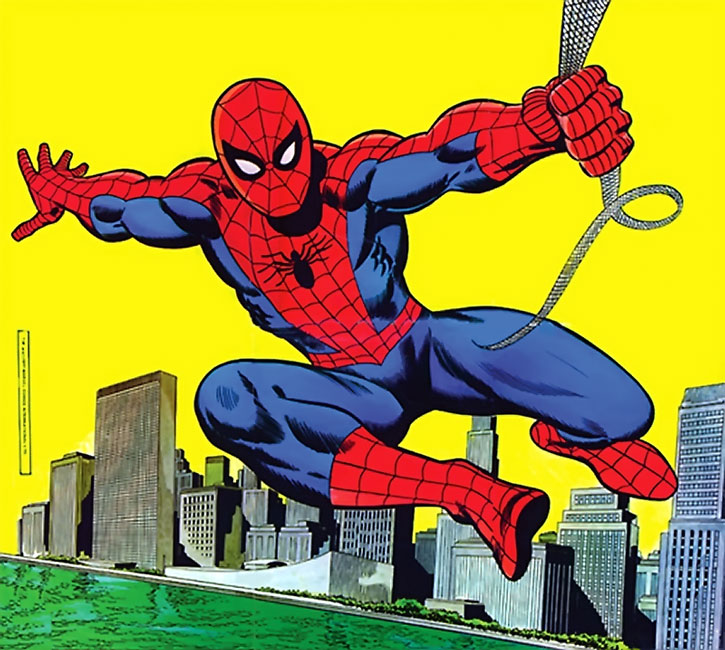 Spider-Man first appeared in 1962 and was the first teenaged superhero that was THE HERO and not the hero's sidekick. Peter Parker was just an ordinary NYC high school student when he was bitten by a radioactive spider giving him super powers. Peter struggles with taking care of his family, juggling his school work and job at the Bugle, trying to date girls, all the while fighting crime on the side. It's a tough life, but with great power comes great responsibility and it's his personal life that always seems to lose out. Spider-Man's suit is a classic one: patriotic red and blue suit with black lines of spider webbing running all over. He's got a black spider logo on his chest and another one on his back. His mask has white eyes outlined in black. Sometimes he has white webbing under his arms and sometimes he doesn't. Timeline of Comic CostumesLive Action AppearancesThe Electric Company (TV series), 1971-77 Ramsey Mostoller The Amazing Spider-Man (TV series), 1977-79 Frank Novak Spider-Man, 2002 James Acheson Spider-Man 2, 2004 James Acheson Spider-Man 3, 2007 James Acheson The Amazing Spider-Man, 2012 Kym Barrett The Amazing Spider-Man 2, 2014 Deborah Lynn Scott Captain America: Civil War, 2016 Judianna Makovsky Spiderman: Homecoming, 2017 Louise Frogley Gallery of Costume DesignSpider-Man was introduced as a new character in the fourth season of a PBS educational program for kids called The Electric Company, a show I watched religiously. Spider-Man would appear for short segments throughout the season to foil villains, nab bad guys or just generally help out. Danny Seagren looks great in his sleek Spidey-suit. It's not wrinkly, baggy, or saggy. The suit itself is a nice matte stretch-knit, not shiny, not latex. No built in fake muscles, no armor. The only odd thing about this version of the web-slinger is that he doesn't have a voice and only talks in thought bubbles while the other cast members speak. I didn't get why that was until my husband pointed out that the whole point was to get kids to practice reading. Duh. I was 8 when Spider-Man joined The Electric Company and could already read. I was probably too busy showing off for my mom and baby sister to notice that Spidey didn't talk. Here's a typical segment from the show. Because the Spider-Man segments were so popular on The Electric Company, when the show got canceled, Spider-Man took his act on the road and starred in his own show that ran for two seasons on CBS, the network that was also responsible for all of the other superheroes on TV at the time: Wonder Woman, Shazam!, Captain America, The Incredible Hulk, and Doctor Strange. Nicholas Hammond played Peter Parker and he looks equally good in his suit. The eyes are a tad weird looking probably because they are too small in proportion to his head. And I'm not sure what the deal is with that white utility belt he's wearing in this photo. For the time Spidey's wall-crawling and web-slinging abilities were really great special effects for TV. And the reason that the show was canceled after only 13 episodes was that it was too expensive to produce. Here's a clip. Peter's stunt double Fred Waugh, who is in the suit in this clip, was also the stunt coordinator for the show. It's fairly long and drawn out but at least watch until he's done fighting Ninjas in the hallway. After that they go up on the roof. It's fairly obvious how they did the wall-crawling now, but back then it was genius! Marvel sold the film rights to Sony in the 90's. Sony made $800 million off of the first three movies, starring Tobey Maquire. Tobey Maguire found out early in filming that he was highly claustrophobic and couldn't wear the suit with his face covered. So it's only Tobey in the suit when you can see his face. All other shots are of stuntman Zach Hudson. And the suit does look fantastic on him. As discussed in a previous blog, Peter Parker made his own suit. Yeah, right, sure he did. The only suit Peter Parker is capable of making is his wrestling costume. His actual suit was designed by James Acheson as one piece, except for the hood. He takes his hood off a lot. Later on a fly vent was added so that the poor man in the suit could go potty without having to take the whole thing off. You'd think that Acheson would have thought of that early on in the process. The Spidey suit really did look amazing. It was the peak of perfection of supersuits of its time. The one thing that bothered some fans, but not me, was that his spider webbing goo was organic and not something he invented. I didn't have a problem with that. It went right along with his improved muscle mass, eyesight, and coordination. The first movie was great, the second was not as great and the third movie was just crap. No one wanted to see Emo Spidey no matter how cool the Venom suit looked. The reboot films star Andrew Garfield. The problem with these films may have been that Peter Parker was played by a 34 year old Englishman whose accent kept wandering. Also, he skateboards all over New York City, but now that he has super-powers he has to practice his skateboarding tricks in a "training montage". Shouldn't he be practicing web-slinging from building to building? It seems like that might be a harder trick to master. My husband joked that he should have been called Peter Parkour. Really the best and most believeable thing about the first movie was the relationship between Sally Field and Martin Sheen as Aunt May and Uncle Ben. Again we are given the trope that Peter makes his own costume. I was laughing my ass off when he was hand-sewing his hood. Then he does a google search for fabric, "spandex, spandex, spandex". Am I really supposed to believe he hand-sewed his suit from a bolt of fabric with no pattern? Who did his fittings? Then he screen prints the spider logo on the chest, incorporates sunglass lenses into the hood, and his costume is all done and fits perfectly. And he does his own laundry. I guess the suit is machine washable. Also, he didn't invent his web shooting goo, he stole it from Oscorp. What? The real problem with the supersuit in the first movie is that it's from Bizzaro-world. In no iteration is there a stripe up the leg or does the red area of the torso go that low down into his crotch. In fact, it ends in a princess waistline that is poking out on top of the bulge of his penis. This is not a good look for a superhero. There are curvilinear lines that travel all around the suit like they're drunk. If you look at the detail view of the fabric, it resembles a basketball with tiny holes punched into the fabric. The spider logo both front and back has super long legs that just keep going and going. And what is up with the white striping details on his boots? If you are from Texas, that totally reads as a cowboy boot heel. But these are aesthetic complaints. A more practical complaint is that he made his eyes out of sunglasses, fine for daytime crime-fighting, not so hot for nighttime vigilantism. This Spidey looks like he has a perpetual wedgie. NO, NO, NO, NO, NO, NO, NO! Mama mia, mama mia! Mama mia, let me go! Beelzebub has a devil put aside for Sony! Sony! Sonyyyyyyy! And don't get me wrong, I feel really sorry for Andrew Garfield because he loves this character so much (it was his first Halloween costume when he was 3) and really wanted these movies to be good. But they just weren't. I don't know if it was the nerd rage over the suit that influenced Sony's decision to get a new costume designer and redesign the suit for the sequel, but it didn't fix the inherent problems with the reboot, which is that the actors playing Peter and Gwen were too old to be graduating high school and that the script was bad. Nevertheless, Sony felt it was worth a shot, so Spider-Man's eyes went from small and black to large and white, the random leg stripe disappeared, the cowboy striped boot heel and toe also vanished, and the red area on the torso was raised, curved off at center front, and no longer points at his penis. So, yes, thank you for the fixing the most egregious problems with the suit. It still didn't fix the casting or the acting or the screen-writing. The reboot movies tanked so hard that the third one was canceled. Thanks for not beating a dead horse, Sony, a la Fox and Fantastic Four. Marvel has now reached an agreement in which Sony retains the stand alone movie rights while Marvel regains creative control over the character in all formats. Which is why Spidey got to be in Civil War with the rest of the Avengers. Tom Holland is the new Spider-Man and he's a wee 5'8" and just turned 20 when Civil War was released. I was surprised to find out that he's also English because his accent doesn't wander all over the place. Looking at his baby face I totally believe that he's 15. Also, Tom is a gymnast and a dancer--he played the lead in Billy Elliot: The Musical. So here's the new suit that Tony Stark made. The spider logo on the chest is much smaller than we've seen before. You probably didn't notice but the eyes actually change sizes on camera, just like real eyes, they can squint with suspicion or open up really wide in surprise. The spider web lines only show up on the red parts of the costume and are actually two faint lines drawn right next to each other, rather than the thick, raised lines from the Tobey Maguire run. The blue parts have lines that resemble a technical drawing rather than spider webbing. I'm not sure what practical function these darker, thicker black lines serve, but maybe we'll find out in Homecoming. His web shooters take the form of grey bracelets probably a product of Stark Industries as well. I hear that we'll get a home-made version of the Spidey suit as well in the new movie but thank you, screen writers, for letting Tony Stark take all the credit for manufacturing this suit. Costume designers everywhere are applauding. I can't wait to see the crappy, home-made version. Homecoming will be a collaboration between Sony and Marvel. Smart Sony! Smart Marvel! Hopefully Homecoming (release date July 7) will prove that collaboration makes better movies and more money and then Fox will fall in line with FF, because them giving up any control over X-Men is probably just too much to ever hope for. Interviews with DesignersAlive: "Q&A with costume designer, James Acheson" The Lantern: "Costume Designer James Acheson talks 'Spider-Man' behind the scenes at the Wex" The Times Picayune: "James Acheson, the Oscar-Winning designer of Spider-Man's signature threads, shares his secrets at a costumers convention in New Orleans" Geek Tyrant: "Unused Black Spider-Man and Venom Costumes for Spider-Man 3" Christopher Jones: "The Amazing Spider-Costume" MTV Movies: "How Spider-man Got His Amazing New Costume" CDG: "The Making of 'The Amazing Spider-Man' Suit" Hello!Fashion: "Interview with The Amazing Spider-Man 2 costume designer that everyone wants to work with" CDG: "The Amazing Spider-Man 2" Den of Geek!: "Designing the Amazing Spider-Man costumes" Geek.com: "Why Spider-Man looks so weird in Captain America: Civil War" ScreenRant: "Why Spider-Man's Homemade Suit is Important to Homecoming" X-Men FranchiseThe X-Men appeared in 1963. The X-Men are a group of mutants at Xavier's School for Gifted Youngsters. They are born with an eXtra gene that manifests at puberty which gives them unique abilities that they must learn to use and control. It is my belief that these themes are the reason that this franchise is so overwhelmingly popular among teenagers because it connects with them on a personal level. The X-Men are trying to be accepted as human, to gain equal rights, and to be left alone to lead ordinary lives. Unfortunately, human-kind is prejudiced against them and fears them. Politically, humans are persecuting the mutant population, trying to get all mutants put away or locked up. Some mutants believe ordinary humans should be wiped out and mutants should rule the world. This faction of mutants is led by Charles Xavier's frenemy, Magneto. The title was concerned with social issues and used the anti-mutant themes to explore a variety of minority issues specifically racial, ethnic, religious, cultural, and LGBT persecution. As Chris Claremont said, "The X-Men are hated, feared, and despised collectively by humanity for no other reason than that they are mutants. So what we have here, intended or not, is a book that is about racism, bigotry, and prejudice." The original 1963 team members were Iceman, Angel, Beast, Cyclops, and Jean Grey in her Marvel Girl persona with Professor X as their teacher. Magneto was leading the Brotherhood of Evil Mutants with his children Scarlet Witch and Quicksilver as well as Mastermind and Toad. Havok and Polaris were added as good guys later on to increase sales but it didn't work and Marvel stopped producing new stories. Eventually the title was canceled at the end of the Silver Age for 5 years. Len Wein, Dave Cockrum, and Chris Claremont revived the title in 1975 with new team members from all over the world. The Uncanny X-Men were Wolverine, Colossus, Nightcrawler, Banshee, Sunfire, Thunderbird, and Storm, and were led by Cyclops. The bad guys got a new character as well: Mystique. The 1980's saw the greatest moment in X-Men canon: the Jean Grey/Dark Phoenix saga. Other important storylines include "Days of Future Past", "The Trial of Magneto", and "God Loves, Man Kills" all of which were incorporated into the film franchise. By the early 80's X-Men was Marvel's top selling title which spawned five spin-off titles and longer stories were carried across all titles. Toward the end of the decade more new characters were added: Kitty Pryde, Rogue, Psylocke, Dazzler, and Jubilee. Apocalypse and Sabretooth were added to the ranks of bad guys. In a strange turn of events, Magneto becomes a good guy and takes over the teaching of the young mutants in Xavier's school. In the 1990's a new title was launched in which the teams were broken up into two--Cyclop's blue team and Storm's gold team. New characters were Gambit, Cable, and Bishop. Emma Frost becomes a good guy and also teaches at the school. More new titles were launched, including Deadpool which we will get to in a minute. The animated series was launched in 1992 and ran for 5 seasons. Then 3 years later Fox starts making movies. Timeline of Comics CostumesCyclopsCyclops is an original team member. His powers are laser beam eyes that he must shield with special glasses so as not to blow up everyone he sees. His real name is Scott Summers and he is dating Jean Grey. He has a younger brother named Arthur who is also a mutant and becomes Havok later on. Cyclops is the leader of the team and he prefers blue and yellow for his supersuit, the original team colors. Later on, when they split into two teams, Cylcops leads the blue team and Storm leads the gold team. Jean Grey/Phoenix/Dark PhoenixJean Grey is also an original team member and a ginger. Jean's mutant powers are telepathy and telekinesis. In addition to being a mutant, she's also a designer and a model and takes it up on herself to design the team uniforms. She starts off as Marvel Girl, then she dies, and comes back to life as Phoenix, then gets taken over by evil and becomes Dark Phoenix, then sacrifices herself to save the universe. Then comes back (again) and finally marries Scott in 1994. 1963-76 Accompanying text by Savage Mouse Part 1 of 13 1973-1985 Accompanying text by Savage Mouse Part 2 of 13 1991-94 Accompanying Text by Savage Mouse Part 4 of 13 StormStorm joined the X-Men in the relaunch effort of Uncanny X-men. She's from Africa and is the daughter of a priestess. Here real name is Ororo Munroe and her mutant power is that she can control the weather. She has white hair and blue eyes. She went through punk phase in the late 70's before losing her powers and running off to Asgard to be a goddess. She then regains her powers, and heads the gold team. Later on she marries Black Panther and becomes his Queen. 1975-83 Accompanying Text by Savage Mouse Part 1 of 12 1991-96 Accompanying Text by Savage Mouse Part 4 of 12 RogueRogue is from Mississippi and is very Southern. Her real name is Anna Marie and she has a streak of white in her brown hair. Her mutant power is that she sucks the life out of anyone she touches and (if mutant) absorbs their powers for a time. Rogue joined the team in 1981, absorbed Ms. Marvel (Carol Danvers) who remains a distinct personality in her head until killed by Magneto. She is assigned to Cyclop's blue team with Gambit, who she had a relationship with, although what that entailed we are not sure since she can't touch or be touched without deadly consequences. 1981-85 Accompanying Text by Savage Mouse Part 1 of 12 1985-91 Accompanying Text by Savage Mouse Part 2 of 12 1991-2000 Accompanying Text by Savage Mouse Part 3 of 12 PsylockePsylocke first appeared in 1986. She was originally named Betsy Braddock and was English. When her mutant powers manifested, she got purple hair. Her powers are telepathy but not fighting skills until she fell into enemy hands during a mission and was altered with purple cameras for eyes and brainwashed. She was then rescued, killed and resurrected, but then lost by the X-Men and found by Mandarin, unconscious with no memories. Mandarin had her consciousness transferred into an Japanese brain-dead ninja woman and she became the assassin Psylocke. Don't worry, she was eventually found and rescued by the X-Men again. 1986-89 Accompanying Text by Savage Mouse Part 2 of 9 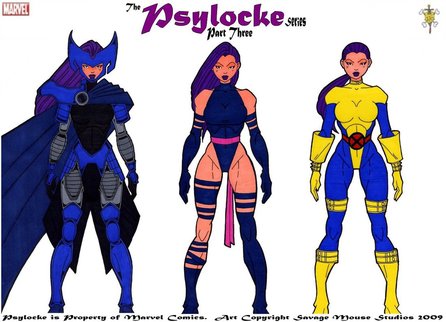 1989-91 Accompanying Text by Savage Mouse Part 3 of 9 WolverineWolverine was added to the X-Men in 1975 as part of a plan to diversify the team and boost sales. Wolverine was born James Howlett in Canada, although he's actually the illegitimate son of his parents' groundskeeper, Thomas Logan who killed Wolverine's father. Wolverine manifests his bone claws and then kills Logan in return. His mutation allows him to live a very extended life and he eventually serves in WW I and II. At some point the military gets ahold of him and coats his skeleton with adamantium to turn him into Weapon X. Later he joins the X-Men when Charles Xavier recruits him. He has since become the most popular member of the team. Live Action AppearancesX-Men, 2000 Louise Migenbach X2, 2003 Louise Migenbach X-Men: The Last Stand, 2006 Judiana Makovsky, Lisa Tomczeszyn X-Men Origins: Wolverine, 2009 Louise Migenbach X-Men: First Class, 2011 Samantha Sheldon The Wolverine, 2013 Isis Mussenden X-Men: Days of Future Past, 2014 Louise Migenbach X-Men: Apocalypse, 2016 Louise Migenbach Logan, 2017 Daniel Orlandi Gallery of Costume DesignMarvel sold the rights to the movies to Fox in 1993, so that's who's responsible for this mess. The problem is that it's a highly profitable one, unlike Fantastic Four. This is more complicated than the other two. Fox owns the right to the term mutant and any characters who were part of the X-men team, but they need Marvel to sign off on all television deals, which is why you haven't seen any live action X-Men on TV yet. There was an animated series in 1992 (before the legal wheeling and dealing) as a Saturday morning cartoon that ran for 5 seasons. What we're talking about now is the nine feature films and Hugh Jackman got to be in every single one of them. Many different characters have been part of the X-Men film franchise. The most popular characters that have made it into the films are Professor X, Magneto, Cyclops, Jean Grey, Beast, Rogue, Wolverine, Storm, Nightcrawler, Archangel, Mystique, Kitty Pryde, Colossus, Psylocke, Quicksilver, but not Scarlet Witch. My biggest complaint about the entire franchise is that the team is no longer in their classic costumes and everyone looks the same in all black leather. Cyclops even makes a joke about it. Yes, actually, I would prefer yellow spandex. This is how the team looked in The Uncanny X-Men in 1991. At this point in time the X-Men have gone back to wearing team uniforms newly designed by Jean Grey, inspired by the original black and yellow uniforms but with blue instead of black. with the addition of the red belts. I blame this entire phenomenon of all black costumes on The Matrix which dropped in 1999. Kym Barrett was the designer on that film. In The Matrix, everyone is in black. It was a great look for The Matrix because that film is a dystopian sci-fi thriller. And it worked. With the immense popularity and financial success of The Matrix, (it made $463 million world-wide) and it's continued franchise success with two sequels, nine animated films, three video games, and a reboot currently in the works, it's hard not to get sucked into thinking that this is the best way to costume a movie. Everybody had Matrix fever. However, The X-Men comics are not a dystopian sci-fi thriller, they are a superhero fantasy that is equal parts funny and action/adventure. My husband's opinion is that The Matrix just stole this look from Hellraiser, so it's all Clive Barker's fault. Keanu just needs to shave his head and have pins sticking out of his face, I'm surprised no one has done a parody mashup version already. Seth Green: Please, please, please do this on Robot Chicken! But I digress. So let's just take a minute to remember what the X-Men looked like on TV from 1992-1997. There's Wolverine in his yellow spandex and Rogue and Banshee, Gambit and Jubilee. Not only were the costumes colorful and unique to each character but, more importantly, this was a good show. The stories were straight from the comic books, there were good lessons for kids, good role models too. Strong female characters that get equal screen time and more lines than, "Yes, Professor." Half of Season 3 was the Dark Phoenix saga. So why just three years later, do we lose all the color and uniqueness of each character and get this exactly the same black leather team uniform? Louise Migenback is the designer who's mostly responsible for this all black version of The X-Men. She was responsible for the first two and 3 more of the nine total films, which translates into 4/6 of the films I'll be talking about here. The problem here, Fox and Louise, is that any time you have a group of people who are all wearing uniforms, it's that much harder for the audience to tell them apart. And the minute bits of differently colored trim outlining the X just isn't enough. Especially in a two hour movie (compared to a TV series) when you just don't have that much time to get to know these dozen or so characters, you need more differentiation between their costumes to help the audience keep them all straight. Scroll down and look at all the group photos: a sea of heads in black suits. BORING! And it just keeps going, and going, and going like the Energizer Bunny. And now I'm going on a feminism rant so bear with me. Storm is regarded as Marvel's most important female superhero. Not only was she one of the first black superheroes in general, but Storm was also the first female black superhero. Her historical significance is that the two defining aspects of her personality are her racial identity and her social status as a mutant. Because the debut of the series coincided with the Civil Rights Movement. the plight of the mutants has always mirrored that of African-Americans. Storm's creation in particular is seen as a strike against the hey-day of Blaxploitation films. Which is why it is so very distressing to me that these films gave Halle Berry almost nothing to do. Storm is a team leader. She took over running the team for Cyclops at one point and then led her gold team while Cylcops led the blue team. She is strong and makes good decisions in clutch situations. Where is the Storm stand alone film? Halle Berry really wants to do one. Here's the costume problem with Storm. Darker skinned actors don't show up as well in all black costumes as their lighter skinned counterparts. The artists who drew her knew that and fairly soon she ended up in white. Where is Storm's white costume, Louis? Also, this wig is super awful and doesn't add any height. Her hair should be a mane that flies out all around her when she's using her powers. Mystique has lost all her clothes and developed some sort of skin disease, which I feel was just an excuse to sell a bunch of repeat tickets to teenage boys because Rebecca Romjin-Stamos was naked the whole time. She wears a white dress with a skull belt in the comics, but not in the movies. She has clothes on when she's impersonating someone else in the movies, so she's clearly capable of shape-shifting herself with clothes. Why is Mystique, one of only 4 lead female characters in the whole franchise, naked all the time? Yes, it's a really cool makeup job but you'd have had to do less of it if you'd just given her a costume and some dignity. Also, she hardly has any lines either. Last Stand completely screws up the Jean Grey/Phoenix/Dark Phoenix story arc. The whole point of her character arc is that when she is recruited by Charles she is Marvel Girl. She becomes Phoenix when she sacrifices herself to save her teammates but is saved by an alien entity The Phoenix Force. She rises from the shipwreck as Phoenix in a green and gold costume. Later she is overwhelmed by evil and becomes Dark Phoenix and her costume changes to the very similar red and gold one. Dark Phoenix goes on a destructive rampage and after consuming a star and killing millions of people, Jean's personality finally resurfaces, manages to gain control over her body and commits suicide to save the world. So the real problem here is that at no point do we ever get her transformation from Marvel Girl to Phoenix in the films, which is fine as long as you start the films with her already being Phoenix. Then when we do get her transition to Dark Phoenix her costume has to change colors. Instead what we get is this horrible black leather outfit that everyone else is wearing. Her Dark Phoenix costume looks like clothes, not a uniform nor a supersuit. Is it really too much to ask Fox for a supersuit, Judiana Makovsky and Lisa Tomczeszyn? Just one? Because I absolutely hate what she's wearing. In fact, it looks no different than what Marvel put Scarlet Witch in for Civil War, another design decision that was equally as bad. Then there's Rogue. Rogue is the character Fox gets the most wrong. First, she was taken in by Mystique and Magneto and spent her first years as a bad guy until Professor X saves her and brings her to the school, which means she's not traveling with Wolverine until rescued by Storm and Cyclops. Second, Rogue doesn't show up at the school till the 80's, but the present day of the first film is 2000. Third, when she sets her sights on a boy it's Gambit not Iceman (Bobby), because Iceman was an original character and by the present day of the first film would be the same age as Cyclops and Storm. The whole thing is just all screwed up. But, even if you ignore how off the timeline of these characters are, Rogue still has more problems. She does not have a thing for Wolverine, ever, that was Kitty Pryde. And she is one tough cookie. Fox's Rogue is a weak victim whose only purpose is to make goo-goo eyes at Wolverine, and get stabbed, killed, kidnapped, manipulated, pitied, and rescued. Classic Rogue is always in green. Green is her signature color. Partially because she sucks the life out of anyone she touches and partially because she's jealous of everyone else who can touch and be touched by others. Of all the X-Men, Rogue is the most physically isolated. Fox at least gives her gloves to wear so that she doesn't accidentally touch anyone, but more often than not when she's not in the black leather suit, Anna Paquin has got so much exposed skin, that I'm sure she accidentally touched all her fellow actors while filming which is something that Rogue the character was always super cautious about. I just don't see that level of care taken with her character or her character's clothing choices. And thus ends the first trilogy about adult X-Men in the present day in 2000. Now we're going back in time. So once we remove the three installments about just Wolverine (Origins, Wolverine, or Logan) what we have left is the prequel trilogy that takes place at various stages in the past and is about the characters' younger selves. So the prequel trilogy starts with First Class which is set in the 1963. Finally we get some actual yellow on the uniforms, thanks to a new designer, Samantha Sheldon. First, let's remember how the original 1963 team looked in the comics, which is who this group of characters is supposed to be. There's Erik in his Magneto supervillian costume, Angel, Beast, Cyclops, Jean Grey, and Iceman being all icey, his uniform is underneath all the ice. Notice that Beast did not start out being blue. Here's the team in First Class: Charles Xavier, Banshee, Havok, Erik, and Mystique. Everything about this picture is wrong. First, Charles should be wearing a suit, not the team uniform, because in the 1963 he was old, bald, in a wheelchair, and was running the school. Erik was already Magneto and they were already enemies. The other three kids in this photo shouldn't have been there. Havok showed up in 1969, Banshee and Mystique showed up in 1975. This should be a photo of Jean, Cyclops, Angel, Beast, and Iceman. If you can't even keep the players straight I don't know how you expect to do your source material justice. Timeline rant over. Now we can talk about what they are wearing. These uniforms are clunky. They do not look retro 60's in comparison to the black leather ones. X-Men uniforms are supposed to be aerodynamic so they can do all their running, jumping, and flying. At least Samantha added yellow and blue (albeit really dark blue) to the basic black. And each costume has a tiny bit of individualizing to it. There are some minute differences on the jackets--not everyone has the same collar, Banshee has some piping detail that the others don't, and Havok has a subwoofer in his chest. However, the costumes are still not individualized enough-- the sleeves, belts, pants, and boots are all identical. My husband said, "They look like they're going to The Transformers Club on Bumblebee Fetish Night." I have provided you with Bumblebee from the animated series in 2008 for comparison. The point is that they don't look like X-Men. Now let me introduce you to Negasonic Teenage Warhead, from Deadpool, in her black and yellow costume which does look like an X-Men uniform. This is a much better design choice for that classic, sleek uniform, Fox! Be smart. Be like Deadpool! For Days of Future Past we're back to Louise Migenbach and her sea of all black, all the time. This installment moves the events of the past ahead 10 years into the 70's and the events of the present ten years into the future where the mutants are at war with the self-aware Sentinels, invented by the humans to defend themselves from mutants. Future mutants use their powers to send present Wolverine to the past to prevent the war that will start ten years in Wolverine's future. Yes, I know, time travel plot-lines are both confusing and full of holes which is why Zimbio has drawn up this handy-dandy infographic to help us. And if that's not enough, here's answers for another eleven questions that you probably still have. The yellow costumes from the past are gone. There is no 1970's team uniform because there is no team. Wolverine has to fix that. The present costumes get updated for the future with a bit more colored trim bits in among the black. And yes, that's Bobby with a beard, but no Rogue in this film, it's now Kitty Pryde that helps Professor X send Wolverine back to the past. I have no idea how her phasing powers allow her to do that and you won't find the answer in the link above either, because she can't, it's stupid, thanks a lot Fox! By the time we get to Apocalyspe, the costumes get even worse. The team spends most of their time on a mission in all black Kevlar tactical gear.Rogue got completely cut out of the last two movies, but worse than that, Storm is now a bad guy that the team is having to fight, along with Magneto, Psylocke, and Archangel. Storm has had almost nothing to do on screen in this entire franchise and by the time we get to Apocalypse and she's the bad guy helper monkey, she's almost mute. What the hell, Fox? Storm is not a bad guy, never has been, never will be. Rogue is the one who's origin story includes hanging out with the bad guys. Get your alignments straight! And if you still have unanswered questions from all the damn plot holes, here's answers to twelve burning questions from Screen Rant. In this final installment we sort of get the classic 80's punk Storm, played by Alexandra Shipp. Well, we at least get the mohawk. This is the only X-Men who actually dressed in all black leather from her skin-tight pants to Callisto's war-trophy vest with popped collar. She accessorizes with knee-high boots, two belts, a studded choker, gloves, and lightning bolt earrings. This is a popular and well loved costume that lasted a long time in the comics. Your movie is set in the 80's why didn't you give us this costume? Instead what we get is this super-futuristic, cyborg armor- looking, grey-on-grey thing. And I see what you were trying to do, to unify the four Horsemen so that they all look like they belong on the same team with Apocalypse. And I would applaud you for that, if these were the actual Four Horsemen and not Storm, Psylocke, and Magneto. Last, but not least, Psylocke is in this movie as one of Apocalypse's Four Horsemen. Are you seriously going to give us Psylocke at the very end of the prequels, have her play for the wrong team, lose, and then just leave and not repent of her evil ways and join the X-Men with Storm? Seriously? At the very least we get the most comic book accurate costume to date and only because the actress, Olivia Munn, is such a comic book nerd that she insisted on it. And even then, the boob armor is from out of nowhere. OK, Psylocke, I see you've protected your boobs. Fine. Then I shall stab you in the heart and you'll die instantly or I'll stab you in the guts and you'll bleed out much more slowly. Which do you prefer? At the very end of the movie, the costumes are finally beginning to resemble colorful supersuits: Cyclops is wearing something that really does resemble his actual comic book costume. Beast is in blue, Nightcrawler is in red and has exaggerated shoulders. Mystique finally gets something that resembles her white dress from the comics, even if it's just the top and not the whole dress. Jean Grey is still in mostly all black but they've added small sections of yellow on her arms. Quicksilver and Storm are all matchy-matchy in grey on grey both with white/grey hair. They look like they're supposed to be brother/sister. Ignore the man in the plaid shirt, that's the director Bryan Singer. Meh. And now we're getting two more movies-- New Mutants and Dark Phoenix which are scheduled to start filming immediately. I have no idea what those will have in store for us other than, because we didn't learn our lesson rebooting Wolverine's origin story, now we're going to take the worst thing about the first trilogy and do it again. I swear, if they don't do right by Dark Phoenix this time, the nerd rage will be strong with this franchise. Interviews with DesignersRotten Tomatoes: "X-Men movies ranked worst to best by Tomatometer" I don't fully agree with their ranking, but the commentary points out the worst problems with each of the films in the franchise. Tyranny of Style: "The Latest from the Set of X-Men: Days of Future Past" Tyranny of Style: "The Digital Costume Illustrations of X-Men: Days of Future Past" Hello, Tailor: "The Costumes of X-Men: First Class, Part 1: Womenswear" Hello, Tailor: "The Costumes of X-Men: First Class, Part 2: Menswear" Hollywod Reporter: "'X-Men Apocalypse': Why Nightcrawler Got a Makeover" CDG: "X-Men Apocalypse" Screen Crush: "X-Men Apocalypse Concept Art Reveals Ben Hardy's Archangel" Deadpool FranchiseDeadpol was created in 1991 and is the baby of the Marvel Empire. He is an anti-hero, something you really hadn't seen in comics before. Deadpool started out as Wade Wilson, a mentally unstable mercenary soldier. Because of his mental condition he doesn't remember his personal history, which changed depending on who's writing the stories. He was based on a cross between Spider-man and Wolverine. His first origin story made him part of the Weapon X program, like Wolverine; another made him seek a cure for his cancer and instead was given the super healing serum. He is the only character who knows he's fictional and continuously breaks the fourth wall. He is the wise-cracking, taunting, hilarious "Merc with a Mouth". His primary superpower is accelerated healing; his weapons are two katana swords. His skin is heavily scarred from the serum's effects and in a 2004 Cable & Deadpool comic said that he looked like a cross between Ryan Reynolds and a Shar Pei and the rest, as we say, is history. His costume has become part of our mainstream pop culture and shows up everywhere these days. It's just as iconic as Spider-Man: red and black full body coverage, not as aerodynamically stretchy as Spidey, more tactical, in case he gets shot, than practical, which he does A LOT. Colossus is a Russian mutant who's skin turns into metal. He wears a bright red and yellow Eugene Sandow leotard in the comic books. The only character you probably haven't heard of before is Negasonic Teenage Warhead. She was only in one issue--New X-Men No. 115 in 2001. She was a student at Professor X's school but was killed. She was a telepath and could see three days into the future. I guess she didn't see that coming. For this movie her powers get an update, but not her attitude. She's an Emo girl who took her name from a song by Monster Magnet that was released in 1995. I included the video because I knew you'd want to see it for yourself. Timeline of Comic costumesImgur: "Deadpool: A Brief History" Popculture: "Deadpool's Other Looks: 5 Best, Weirdest Looks for the Merc with a Mouth" Live Action AppearancesX-Men Origins: Wolverine, 2009 Louise Migenbach Deadpool, 2016 Angus Strathie; supersuit by Russ Shinkle Gallery of Costume DesignThe rights to Deadpool are also owned by Fox, with no loopholes like the X-Men. In the first movie he's part of the Weapon X program and gets his mouth sewn shut by the Doctor who gives him the super soldier serum. Fans hated that. You can't take the character known as "The Merc with a Mouth" and sew his mouth shut. WRONG! WRONG! WRONG! Also if you have Ryan Reynolds playing Deadpool and Deadpool is supposed to look like Ryan Reynolds crossed with a Shar Pei, then this makeup is a disaster. If you don't know what a Shar Pei dog looks like, I've included a handy reference photo. In terms of costuming Deadpool, Louise Migenbach is back with another sea of black para-military costumes. Everybody in Team X is a mutant and all of them could be wearing supersuits, but no. This is why I didn't bother talking about this movie earlier. For Wade Wilson you get two looks: Pre-superserum special-ops Kevlar vest over red t-shirt and OD pants and Post-superserum no Deadpool supersuit just wierd black lines on naked chest. WTF, Louise? The first appearance of Deadpool was such a disaster, it's amazing that Ryan Reynolds was able to get his movie made at all. Luckily for us, he succeeded and it was so successful, ($783 million worldwide) it's going to get a sequel. And NONE of that money goes to Marvel. Poor Marvel. So, the Deadpool suit is amazing. It looks exactly like the comic book and even though we can't see Ryan Reynold's mouth move that doesn't hinder his snappy dialogue a la Bane in Dark Knight 3. If you read the Tyranny of Style article, you'll find out that the studio responsible for engineering his suit is Russ Shinkle of Film Illusions. They are the real-life Edna Modes. You may not have heard of them before, but they were also responsible for all of the Avengers supersuits. Russ and his team had to make multiple copies of Deadpool's suit for Ryan and his two stunt men, (really just two stunt men? Wow.) and each headpiece was designed with multiple removable eyes that were tailored to the needs of each particular stunt... that's singular. Here's what Ryan Reynolds looks like as Deadpool. It looks a lot like what was drawn on the comic book cover. I could wax poetical about the awesomeness of their achievement in costuming, but we also need to talk about the two X-Men in this film: Colossus and Negasonic Teenage Warhead. We've seen a Colossus before in The X-Men Franchise, as played by Daniel Cudmore (who is an impressive 6'6" and was even asked to play the part but turned it down because it was going to be all CGI) and he's no wimp, but just like Lou Ferrigno's Hulk, he suffers only by comparison to the comic book. Yes these guys are huge and muscley, but they aren't GIANTS. Colossus has to be a giant. If you read the Collider article it tells how they actually used 5 actors to bring Colossus to life because none of them were the 7'6" tall that director Tim Miller wanted. Even Andre Tricoteaux, who wore the motion capture suit on set and is pictured below doing stunt work, is only 6'11". He's huge, but he's bulky rather than sculpted and Colossus really needs to be a modern day Eugene Sandow. In terms of Colossus' costume, you already know how I feel about all of the costumes in the X-Men franchise up to this point. They are boring because they are all black and all the same all the time. So this version of Colossus is a vast improvement. No, he's not in the bright red and yellow Eugene Sandow leotard of the comic book as pictured above. They have kept the same basic X-marks-the-spot splashed across the chest but at least they've colored some of the X in red. Also, I'd like to point out that this is the best CGI rendering of clothing I've seen to date. When I watch this movie I totally believe that the CGI character is wearing IRL clothes. Just look at the cast shadow of his left arm on his vest and pants. Wow, CGI department, you did a great job. For Negasonic Teenage Warhead, they've also kept the basic black and yellow suit from First Class but made it way sleeker with more area in yellow. The other improvement over First Class is that there's no cleavage- revealing, zipped all the way down to her navel thing going on in this movie the way Mystique wore it. Yes, in general these two costumes are still mostly black and yes they are tactical rather than spandex, however, I am not being forced to look at a dozen or more actors all wearing black. There are three actors: Deadpool is in red with black accents, Colossus is in black with red accents, and NSTW is in black with yellow accents, you know who's in ALL black? The bad guys. So where does our eye go in fight scenes? To the color! We are naturally drawn to watching the heros who stand out against a background of black. The one exception is NSTW's first costume is entirely black, but that's part of her character as an Emo girl. Interviews with DesignersTyranny of Style: "Deadpool--Making of an Iconic Antihero Suit" Collider: "Deadpool: VFX Breakdown Shows How it Takes 5 Actors to Make 1 Colossus" The Avengers FranchiseThe Avengers debuted in 1963 with a group of pre-existing superheroes that had only just been created a year or less before. Marvel got the idea of joining their characters together from DC's Justice League. The original team included Ant-Man, Hulk, Thor, Iron Man, and the Wasp with Captain America (the only Golden Age hero) joining them as soon as he was discovered frozen in ice. Each character or team gets its own section so keep scrolling down and you'll find all of your favorite superheroes assembled here. The Avengers, 1952With the exception of Captain America, none of the Avengers had been invented by 1952 and in fact wouldn't be for another 10 years. But Ivan Guerrero brilliantly edited these films into a trailer for a film that predates most of its characters by a decade. There's a ton of easter eggs in there for the old movie fan. The Avengers 2012-PresentUniversal owned Hulk, New Line cinema owned Iron Man, Sony owned Thor, Lion's Gate owned Black Widow, and Columbia owned Black Panther, but by 2006 Marvel had gotten them all back. Time to assemble The Avengers! Captain AmericaCaptain America is Marvel's only Golden Age superhero. He's the original Super Soldier. Steve Rogers, an actual WW II soldier is the product of a covert military experiment. He carries an indestructible shield. Near the end of the war he was frozen in ice and remained trapped in suspended animation for years until he was discovered and awakened to join the newly formed team of Avengers. That's not just his origin story, that is literally what happened to the character. Superheroes fell out of popularity after the war so his title was retired in 1949. He stayed on ice until 1964 when he was brought out of his golden age retirement to do battle with a team of new Silver Age superheroes. Like Wonder Woman at DC, he wears the most patriotic supersuit of all the Marvel characters. His costume is mostly blue with red and white stripes around his abdomen. His gloves and boots are red and the lower part of his sleeves are white. He wears a white star on his chest and his hood has a white A on the forehead with white wings above the ears. Timeline of Comics CostumesLive Action AppearancesCaptain America, 1944 Adele Palmer, Robert Ramsey Captain America (TV movie), 1979 Charles Waldo Captain America II: Death Too Soon (TV movie), 1979 Yvonne Wood Captain America, 1990 Heidi Kaczenski Captain America: The First Avenger, 2011 Anna B. Sheppard Marvel's The Avengers, 2012 Alexandra Byrne Thor: The Dark World, 2013 Wendy Partridge Captain America: The Winter Soldier, 2014 Judianna Makovsky Ant-Man, 2015 Sammy Sheldon Differ Avengers: Age of Ultron, 2015 Alexandra Byrne Captain America: Civil War, 2016 Judianna Makovsky Avengers: Infinity War, 2018 Judianna Makovsky Gallery of Costume DesignCaptain America came to the big screen in the film serials of 1944, just three years after being introduced in the comics. Because his suit was being filmed in black and white, it is difficult to recognize his colors as red and blue since the saturation level of both those colors in our flag are about the same. The "blue" reads black and the "red" and white stripes on his abdomen read too light to be red. His lower sleeves are white in the comic books, but here they are the same "blue" as the saggy tights and briefs. His gloves, boots, and briefs read the same color--black--not red or blue. Speaking of boots, he's not wearing the tall red boots with a cuff from the comics, he's in a pair of dressy ankle-length work boots. 1979 saw the release of two Captain America movies; Captain America and its sequel Captain America II: Death too Soon. Reb Brown played Steve Rogers in both of them but wore two different suits; the movies had two different designers. The first one is reminiscent of the jumpsuit Evel Knievel made famous but it could just be the addition of the motorcycle and helmet. This suit is not comic book canon. It's a high-necked, long-sleeved leotard worn over tights made from the same shiny lycra. The red and white stripes are worked into the leotard not around the abdomen but over the shoulder like a vest. The motorcycle helmet has the white wings painted on with the A in front. The boots, gloves, and belts are all matching red leather with white stars and a stripe. The shield is attached to the motorcycle and looks to be made from clear acrylic with the red stripes painted on. It seems to be functioning as the windshield. The central star is blue rather than white. In the sequel, the stripes move to the abdomen where they belong, but become all wrinkley, the lower sleeves are white, the gloves lose their stars and stripe, and the wings on the helmet are now 3D rather than painted on. Also, his belt is blue not red. Then there was the low budget 1990 movie which was a vast improvement over the 1979 ones. The suit is much closer to the Silver Age comic that the previous one--no motorcycle helmet or goggles, no clear acrylic shield, much smaller wings. The problem with this version is it's got sculpted-in muscles, the fabric doesn't look like fabric at all, and it makes Matt Salinger's body look like a Stretch Armstrong doll. Comic books weren't selling well, this movie didn't help and by 1996 Marvel filed for bankruptcy. Marvel was about to sell Captain America to Warner Bros. when the idea for Marvel Studios was hatched and the deal was stopped before the papers were signed, thanks to David Maisel. In the 2011 movie designed by Anna B. Sheppard, the USO version of the suit looks remarkably similar to the Golden Age comics even down to the shape of the shield. The only thing that's off is there are no blue stripes on the shield. Because this is really a period film, all the fabrics are made from fibers that were actually around in the 1940's: wool, cotton, flannel, etc.. The suit is clearly made from natural fibers and not some lycra/spandex/latex blend. The boots have a cuff, the gloves are the appropriate length and taper away from his arm. The hood includes eyeholes and the wings are both 3D and small. And in case you're still wondering how they made Chris Evans so puny at the beginning of the first movie, fxguide: "Case Study: How to Make a Captain America wimp" will divulge all the fx secrets. Chris gets three suits in the first movie, two in Winter Soldier, one in Ultron, and two in Civil War. There are tiny little differences between all the suits and if you're really interested you can read Geek Tyrant: "The Evolution of Captain America's Uniform" who will painstakingly point them all out to you. At this point I am not interested in doing that because the costumes are great, and if I can't point out bad things, then what's the point? They're all great movies that you can watch over and over again without getting tired of them. Bucky Barnes and FalconBucky Barnes debuted right alongside Steve Rogers as Captain America's teen-aged sidekick in the very first issue in 1941. Cap and Bucky fought Nazis together throughout WWII until the plane exploded killing Bucky and dropping Cap into the freezing waters of the North Atlantic. Later, it is revealed that Bucky didn't die in the explosion but instead was rescued by Russian submarine and taken to Moscow where his severed arm was replaced by a bionic one. Due to his amnesia, he was trained as an assassin and called Winter Soldier during which time he had an affair with KGB spy, Natasha Romanova soon to become Black Widow. Bucky starts off in a blue military style tunic with what looks like attached briefs trimmed with a yellow collar. He has red tights and gloves, blue boots and a black domino mask. As the Winter Soldier, he is in all black with his vibranium bionic arm with Soviet red star on the deltoid. He stays in the black domino mask. His hair is now long and shaggy and he looks like a cross between Severus Snape and Peter Pettigrew with his silver hand. It makes me wonder if Ed Brubaker and Steve Epting (the writer and artist) were big Harry Potter fans. Falcon was introduced in 1969 and was the first African-American superhero. When he was introduced it was not as a sidekick, but as a partner throughout the 1970's; the comics were titled Captain America and The Falcon. Sam Wilson was stranded on an island where he finds and befriends a falcon that he names Redwing. Also on the island is a group of exiled Nazi's who were supporting Red Skull during WW II. Sam actually got his powers from Red Skull when he fuses Sam and Redwing's minds giving Sam telepathic control over birds. Captain America tracks the Exiles to the island, teams up with Sam to help create the mechanical wings he uses to fly, thus creating the Falcon persona. They eventually defeat the Exiles and Red Skull, and remain a team thereafter. By 1979 Falcon has become so popular he gets his own title, but by 2004 he and Cap have teamed up again. Ten years later, Sam becomes Captain America when Steve Rogers steps out of the role in 2014. Falcon starts off in a green and orange costume that has a deep V cut out in the chest. but no wings. He wears one thick glove, a mask, and a falcon necklace. Later, his unitard changes colors to become the classic red and white keeping the same deep V with red wings. Now he has a white mask and two white gloves Gallery of Costume DesignBucky is a full-fledged soldier and thus gets a General Issue uniform to start. His Howling Commando uniform is certainly influenced by the comic book original but has been updated considerably. The top is a blue tunic with collar (not yellow) and he has boots and a belt. The tights and briefs combo has been replaced with brown fatigues. In Winter Soldier we finally get to meet Falcon but he only gets a prototype of his wings in this movie. Bucky's costume is taken directly from the source material: all black, para-military. The vibranium arm looks fantastic on camera and his hair is perfectly shaggy and hanging in his face a la Severus Snape. The only real difference is that instead of the domino mask covering his eyes, he wears a half mask that covers the lower half of his face. I'm not sure what the idea behind this is. He's not snow skiing, so all this is really doing is making it difficult for the actor to eat, breathe, and talk and therefore for us the audience members to understand what he's saying. We finally meet Sam Wilson in Winter Soldier. Sam retired from active duty USAF to help vets suffering from PTSD at the VA, where he meets Steve who is now working for SHIELD and they become friends. Falcon gets his wings and goes on a mission with Cap and Black Widow to take out the Winter Soldier who attacked Nick Fury, only to discover that it's Bucky. It takes until Ant-Man before Sam gets his upgrade costume. It's still not great, but it's a vast improvement. You'd think that since Tony Stark made it, it would be more colorful. At the bottom of this section is an interview where Anthony Mackie is pissed because he didn't get the full on red spandex and wings treatment with an actual falcon from the get-go. It does my heart good to hear an actor saying he wants a more colorful and outrageous costume. Interviews with DesignersFastCompany: "Mad Props: hands on with the guy who made Captain America's shield, Thor's hammer, Iron man's heart" Tor.com: Ensembles Disassembled: Avengers Costumes Then and Now National Post: "Leotards to Louboutins: Assembling The Avengers' Costumes" Clothes on Film: "Captain America: Q&A with Costume Designer Anna B. Sheppard" Comic Book Movie: "Alexandra Byrne Describes The Design Process Behind The Costumes in 'The Avengers'" Hello, Tailor: "The Costumes and Characters of The Avengers: part 3: Steve Rogers, Captain America" Hello, Tailor: "Captain America: The Winter Soldier, Part 1 -- Trust No One" Hello, Tailor:"Captain America: The Winter Soldier -- The Tragedy of Bucky Barnes" Hello Tailor: "Costuming and Design in Captain America: The Winter Soldier -- Steve & Bucky" Hello Tailor: "Captain America: The Winter Soldier review, Part 3 -- Black Widow & Falcon" Tyranny of Style: "Costuming Captain America: The Winter Soldier" CDG: "Captain America: The Winter Soldier" Tyranny of Style: "Costume Design of Captain America: Civil War" Black Nerd problems: "Styling Superheroes & Stuntwomen: An interview with Judianna Makovsky from Captain America: Civil War" IGN Entertainment: "Anthony Mackie Unhappy with Falcon's Costume" Ant-Man and WaspAnt-Man debuted in 1962, while Wasp was added a year later in 1963 as a love interest for him. Dr. Henry "Hank" Pym and Janet van Dyne met when Janet's father, noted scientist Vernon van Dyne was killed when he unleashed an alien force during one of his experiments Janet turned to her father's associate Hank to help her avenge her father's death. Hank has invented Pym particles which reduce the size of a human to the size of an ant. It also allows Janet to grow wings. They join forces to defeat the alien and in the course of working so closely together, Janet falls in love with Hank and eventually they start dating. Over the course of their crime-fighting partnership they discover that they can also use the Pym particles to grow giant sized. After Janet's death, Hank allowed his successor Scott Lang to take up the Ant-Man persona. Scott was an electronics expert working for Tony Stark when he stole the Ant-Man suit from Hank in order to save his daughter Cassie from a heart condition. Later, upon her father's death, Cassie also becomes a crime-fighter called Stature, and can now change sizes without the need of the suit as well as communicate telepathically with the ants. Too many second-hand Pym particles? Timeline of Comics CostumesLive Action AppearancesAnt-Man, 2015 Samantha Howarth-Sheldon Differ Captain America: Civil War, 2016 Judianna Makovsky Ant-Man and Wasp, 2018 Louise Frogley Avengers: Infinity War, 2018 Judianna Makovsky Gallery of Costume DesignThe first Ant-Man suit was designed to be the original Hank Pym suit from the 1960's. It functions much like an astronaut's suit, delivering oxygen along with the Pym particles, cooling Ant-Man's body from the excessive heat generation, and defying the excessive density created by his shrinking. That's a lot to ask of one simple suit. The face mask has an elongated snout to suggest anty-ness and there's tubing coming out the back like antenna. We get a brief glimpse of the original Wasp suit worn by Janet Pym in the first movie. It's design is also very 60's retro. I wish we'd gotten to see Hope in it. The Ant-Man suit you see in Civil War has gotten a high-tech upgrade by Stark Industries. I just love that plot device. Every movie we get new costumes because Tony Stark rolled out an upgrade. This one gets big as well as small. And no more exposed tubing on the helmet that could get pulled out by your enemies and cause you to suffocate from lack of oxygen. We've already got a photo of Evangeline Lily in the Wasp suit from Ant-Man and Wasp which is coming out next year. The wings seem improbably big and clunky, especially in comparison to the original pair worn by Janet, but I'll reserve judgement till I see them in context. Interviews with DesignersWheretowatch: "Ant-Man Costume Designer Sammy Sheldon Differ" Hello, Tailor: "Ant-Man: Fun, but still a waste of $130 million" Nerdist: " The Science of Small: How Does the Ant-Man Suit work?" CinemaBLend: "Ant-Man's Costume Has One Massive Flaw" Tyranny of Style: "Costume Design of Captain America: Civil War" HulkHulk debuted in 1962. Physicist Dr. Bruce Banner was fooling around with gamma radiation when an experiment went wrong and he was exposed. When he becomes angry or emotionally stressed, he turns into the green-skinned giant called The Hulk. "HULK SMASH!" Hulk doesn't get a supersuit or even much of a costume. His body mutation really is his supersuit, all 1000 lbs of angry, green muscle. His pants have been purple, tan, and brown, depending on what Bruce is wearing before he gets upset. Timeline of Comics CostumesLive Action AppearancesThe Incredible Hulk, (TV Series) 1977 Brienne Glyttov, Charles Waldo, George Whittaker The Incredible Hulk Returns (TV movie), 1988 John Casey The Trial of the Incredible Hulk (TV movie), 1989 Judy Truchan, Jori Woodman The Death of the Incredible Hulk (TV movie), 1990 Trish Keating Hulk, 2003 Marit Allen The Incredible Hulk, 2008 Denise Cronenberg, Renee Fontana Marvel's The Avengers, 2012 Alexandra Byrne Avengers: Age of Ultron, 2015 Alexandra Byrne Thor: Ragnarok, 2017 Mayes C. Rubeo Avengers: Infinity War, 2018 Judianna Makovsky Gallery of Costume DesignSo there's not much to talk about here because, outside of Lou Ferrigno, the modern day Hulks are CGI. I wasn't even going to include Hulk, but here he is for completeness sake. At the end are interviews with the CGI teams if you are interested in how they did it. Eric Bana's Hulk. Edward Norton's Hulk. Mark Ruffalso's Hulk. With all the improvements that have been made to CGI and motion capture suits since Andy Serkis played Gollum in LOTR, it's kind of amazing to see the nuanced performance that's possible now. This goes way beyond getting rid of Ralph Fiennes' nose when he plays Voldemort. Mark has spoken at length on the subject of the future of motion capture, "We’re just scratching the surface of this thing. This is the most exciting frontier as an actor, what’s happening in motion capture. And I want to be on the leading edge of it. I want to be there with Andy Serkis who is leading it in his own way. This is all about performance, an actor’s performance using this new kind of makeup really. It’s not different than that." Interviews with DesignersThe Fanboy Perspective: "Ang Lee's 2003 Hulk smashes The Incredible Hulk 2010" CGMeetup: "Making of Hulk Part 1--The Avengers--Industrial Light & Magic" CGMeetup: "Making of Hulk Part 2--The Avengers--Industrial Light & Magic" WIRED: "How ILM Built the Best Hulk Ever for The Avengers (and Earned An Oscar Nom)" Hello, Tailor: "The Costumes and Characters of The Avengers: Part 2: Tony Stark, Pepper Potts, and Bruce Banner" Tor.com: Ensembles Disassembled: Avengers Costumes Then and Now Film blogging the reel world: " On Set Interview: Mark Ruffalo" THORThor debuted in 1962. Thor is the Asgardian god of thunder who wields the enchanted hammer Mjolnir, which gives him the power of flight and control over the weather. Thor is all armored up in a breastplate and winged helmet, leather boots, and flowing red cape. Timeline of Comics CostumesLive Action AppearancesThe Incredible Hulk Returns (TV movie), 1988 John Casey Thor, 2011 Alexandra Byrne Marvel's The Avengers, 2012 Alexandra Byrne Thor: The Dark World, 2013 Wendy Partridge Avengers: Age of Ultron, 2015 Alexandra Byrne Doctor Strange, 2016 Alexandra Byrne Thor: Ragnarok, 2017 Mayes C. Rubeo Avengers: Infinity War, 2018 Judianna Makovsky Gallery of Costume DesignThor, played by Eric Kramer in the 1988 Hulk movie, looks more like an actual Viking rather than an Asgardian god. This is not how Thor looked in the comic books ever. That helmet really needs some horns or wings or something. I swear those pants are Naugahyde and he's wearing my mom's old coat under that breastplate. I know it's the late 80's but I swear this was made in the 70's. But it's funny so we can laugh at it and move on. Alexandra Byrne did an amazing job on Thor (and the rest of the Asgardians). The cape is perfect, the breastplate has the little circles on it, the only thing that's slightly off is the color could be a bit brighter shade of blue rather than this two-tone grey. I wish he wore the helmet more! I can't really speak about the Ragnarok costumes since that movie won't come out till November, but I am sad to see his hair gone. I hope he gets it back later on in the movie. This costume has a lot in common with the original naugahyde and sheepskin version in the Hulk, except no sheepskin. It is more tastefully done, but alas, no helmet at all. Interviews with DesignersHello, Tailor "Movie Costumes I have Loved: Thor" Tor.com: Ensembles Disassembled: Avengers Costumes Then and Now National Post: "Leotards to Louboutins: Assembling The Avengers' Costumes" Gizmodo: "The Incredible, Tactical Undergaments designed for the Avengers Cast" CDG: "Thor: The Dark World" Hello, Tailor: "Thor: The Dark World, Part 1: Heroes and Villains" Hello, Tailor:"Thor: The Dark World, Part 2: Female characters & Representation" Flickering Myth: "Fabricating the Gods: Wendy Partridge talks about Thor: The Dark World" FastCompany: "Mad Props: hands on with the guy who made thor's hammer and Iron man's heart" Iron Man and War MachineIron Man debuted in 1963. Tony Stark is a genius billionaire playboy philanthropist, and he also happens to be an engineer, inventor, and a weapons manufacturer. He was kidnapped and forced to build a bomb but in the course of escape pieces of shrapnel became stuck in his chest. He must wear a super magnet to keep the shrapnel from entering his heart and killing him. Iron Man's suit is a combo red and gold suit of body armor or a full metal jacket, if you will. War Machine is Tony's friend James "Rhodey" Rhodes, an American fighter pilot, who becomes Tony's personal pilot and eventually a superhero in his own right, wearing his own version of the Iron Man suit, as War Machine, in 1979. War Machine's suit is of a cooler palette--silver and black. Timeline of Comics CostumesLive Action AppearancesExo-Man (TV movie), 1977 Yvonne Wood Iron Man, 2008 Rebecca Bentjen, Laura Jean Shannon The Incredible Hulk, 2008 Denise Cronenberg, Renee Fontana Iron Man 2, 2010 Mary Zophres Marvel's The Avengers, 2012 Alexandra Byrne Iron Man 3, 2013 Louise Frogley Captain America: The Winter Soldier, 2014 Judianna Makovsky Avengers: Age of Ultron, 2015 Alexandra Byrne Captain America: Civil War, 2016 Judianna Makovsky Spiderman: Homecoming, 2017 Louise Frogley Avengers: Infinity War, 2018 Judianna Makovsky Gallery of Costume DesignThe first film on here is a made for TV movie called Exo-Man that was made in 1977 and designed by Yvonne Wood. Exo-Man isn't exactly Tony Stark but I get the feeling that CBS wanted to make an Iron Man movie but couldn't get the rights to Iron Man so they made this instead. Dr. Nicholas Conrad is a crime-fighting scientist who wears a metal suit to beat up the bad guys, but more importantly to keep him alive and to help him walk since he was paralyzed during a mob hit. It's basically a failed pilot for a series and the suit makes the good doctor look like a giant penis. Even more brilliant is this trailer someone put together from footage of all those CBS movies I just mentioned plus Paul Lynde's Halloween special, a KISS special, and other shows that were on at the time. It's pretty convincing. Check out the actor they call Tony Stark. Modern day Iron Man looks AMAZING! His costume designers, Laura Jean Shannon and Rebecca Benjen, were nominated for a.costume designer's guild award. They lost (not to Dark Knight which won the Fantasy category) to Slumdog MIllionaire in the Contemporary category. They were in the wrong category. This isn't costuming so much as it is armory. Stan Winston Studios created the Cave Escape suit and the Mark III suit for the first film. The cave escape suit weighed 90 lbs and was made of foam and epoxy "armor" that sat on an aluminum frame attached to a sturdy corset with leather sleeves. The Mark III suit was designed before Robert Downey Jr. had been cast and was retro-fitted onto him afterwards. The suits were all going to be CGI because the studio didn't think that a real suit would work on camera. Stan Winston's team set out to prove them wrong. You can read all about it in the two articles below. Tony Stark also made War Machine which is actually Don Cheadle in Tony's Mark II suit in the second film. Then Tony goes on a psychotic inventing binge and makes another 50 suits and we end up with the Iron Army which you can read all about at the end because some other incredibly OCD person put together an infographic of ALL THE SUITS! There are 42. Is that a Douglas Adams Easter Egg? Maybe. Interviews with DesignersStan Winston: "Iron Man--The Making of the Mark I Cave Escape Suit" Stan Winston:"Real Iron Man Suit. Real Performance" Gizmodo: "The Incredible, Tactical Undergaments designed for the Avengers Cast" FastCompany: "Mad Props: hands on with the guy who made thor's hammer and Iron man's heart" Hello, Tailor: "The Costumes and Characters of The Avengers: Part 2: Tony Stark, Pepper Potts, and Bruce Banner" Hello, Tailor: "Age of Ultron: The Empire of Tony Stark" Tor.com: Ensembles Disassembled: Avengers Costumes Then and Now National Post: "Leotards to Louboutins: Assembling The Avengers' Costumes" Tyranny of Style: "Costume Design of Captain America: Civil War" Movie Pilot: "From Iron Man to the Mark 46: The Complete Guide to Tony Stark's MCU Armor & Suits" RedBull#Technology: "This amazing real-life Iron Man suit really flies" Black Widow and HawkeyeBlack Widow debuted in 1964 as KGB secret agent Natasha Romanova who fought Iron Man but later switched sides and joined SHIELD. She is enhanced with the same super soldier serum that was given to Captain America. At first she only wore street clothes because she is a spy and needed to blend in. When she first donned her supersuit, it had a lot in common with the Golden Age Black Canary: blue and black color scheme, Playboy bunny leotard, fishnets, mask, boots. Black Widow wore a cape and gloves rather than a bolero jacket. Hawkeye also appeared in 1964. His name is Clint Barton. After being orphaned at a young age, Clint ran away and joined the circus where he was trained to be a master archer. After seeing Iron Man, he decided to be a superhero. Unfortunately he met Black Widow when she was still a KGB spy, fell in love with her, and turned reluctantly to a life of crime, only to be abandoned by her after saving her from Iron Man. From then on, he fought crime with The Avengers. Hawkeye's costume is always blue and purple color scheme: usually blue tunic worn over tights with purple hood, mask, gloves, boots, and trim pieces. Comic Vine: "Character Evolution of Black Widow" Letterpile: "Black Widow Costume History" NEWSARAMA: "Agent of S.T.Y.L.E.--Hawkeye's Avenging Attire" Timeline of Comics CostumesLive Action AppearancesIron Man 2, 2010 Mary Zophres (Black Widow only) Thor, 2011 Alexandra Byrne (Hawkeye only) Marvel's The Avengers, 2012 Alexandra Byrne Captain America: The Winter Soldier, 2014 Judianna Makovsky (Black Widow only) Avengers: Age of Ultron, 2015 Alexandra Byrne Captain America: Civil War, 2016 Judianna Makovsky Avengers: Infinity War, 2018 Judianna Makovsky Gallery of Costume DesignAt first glance, Black Widow and Hawkeye seem to be the most mundanely clothed of the Avengers, especially compared to the more colorful Cap, Thor, Iron Man, and the Big Green Guy. They are the only two that didn't get their own origin story movie before they showed up in The Avengers and they are dressed almost entirely in black. And I know I was just complaining about The X-Men being in all black and what a bad choice that was but I am fine with Black Widow being in all black because she is wearing what is essentially her classic costume, once she got over her Black Canary phase with the blue fishnets. She can be in black as long as Hawkeye is NOT in black as well. Because then they look the same except he doesn't have sleeves. It's actually in his contract--no sleeves--the "my costume must show off my guns" clause. And I'm fine with that too, because original Hawkeye's costume was also sleeveless. But classic Hawkeye's costume was also bright blue and purple. And giving him a bit of dark burgundy trim does not make it purple or colorful or accurate. I don't know what all went down in the meetings between Ultron and Civil War, but someone decided to change his costume. A jacket version of the black and burgundy vest was built and filmed for Ultron. It had two sleeves. Two more alternate costumes made it to the concept art phase and were even released by Jeremy Renner, but neither of them made it into the final versions of Civil War. His costume in Civil War is black, not purple, not dark blue, it's black. Check out the photo against the green screen background. It is unfortunate that these looks were killed in the concept art phase because both of them are better than what he wore in the first two movies.
Interviews with DesignersTor.com: Ensembles Disassembled: Avengers Costumes Then and Now National Post: "Leotards to Louboutins: Assembling The Avengers' Costumes" Hello, Tailor: "The Costumes and Characters of The Avengers: Black Widow and Hawkeye" Hello Tailor: "Captain America: The Winter Soldier review, Part 3 -- Black Widow & Falcon" Hello, Tailor: "What was up with that Black Widow scene in Avengers: Age of Ultron?" CDG: "Avengers Age of Ultron: Redesigning Black Widow" Tyranny of Style: "Costume Design of Captain America: Civil War" Scarlet Witch and QuicksilverScarlet Witch and her twin brother Quicksilver debuted in the original run of X-Men in 1964. They were Magneto's children and were named Wanda and Pietro Maximoff. They began as reluctant bad guys fighting the X-Men but later turned to good and fought with The Avengers. Scarlet Witch's powers are magic; Quicksilver's are being super speedy. Scarlet Witch marries Vision. Quicksilver marries Crystal, one of the Inhumans. In the comics Scarlet Witch wears a red leotard, cape, gloves, and boots, over a pink unitard. She is a ginger. Quicksilver wears a blue unitard with a white lighting bolt logo across the chest. He also wears white gloves and boots and has white hair. Timeline of Comics CostumesLive Action AppearancesAvengers: Age of Ultron, 2015 Alexandra Byrne Captain America: Civil War, 2016 Judianna Makovsky Avengers: Infinity War, 2018 Judianna Makovsky Gallery of Costume DesignAlthough Marvel and Fox share the rights to Scarlet Witch and Quicksilver, Fox owns the word mutant, so Magneto's children couldn't be mutants in The Avengers films and that's why their origin story was changed. I am underwhelmed for Scarlet Witch and Quicksilver. They are great characters but I hate their costumes, Scarlet Witch most of all. I know there was a faction of women out there that were glad they didn't put Elizabeth Olsen in a red leotard with pink tights. I get that they didn't want her character to be overly sexualized and I'm all for that. But that's on the original artists which is a whole other conversation that we will have later, I promise. For now, let's just focus on what's wrong with Scarlet Witch and what Alexandra Byrne could have done differently. And I understand that she may have had her own ideas about the costumes, but in the Hollywood machine of movie making, the design ideas are a trickle down economy--from the director to the art director to the concept sketch artist to the costume designer to the people that actually build the supersuit. In the case of Magneto's children, it never got that far. I found concept art for three different looks for Scarlet Witch's "supersuit" in Civil War and they all look like clothes. In fact they look a lot like what Dark Phoenix wore in X-Men: Last Stand. Interviews with DesignersTyranny of Style: "Costume Design of Captain America: Civil War" Vision and Black PantherVision was originally created by the robot Ultron as a weapon against The Avengers. He has a jewel in his forehead that provides the power he needs to function as well as being capable of firing laser beams. This version of the character appeared in 1968. Vision eventually changes sides, joins The Avengers and marries Scarlet Witch. In the comics Vision wears a green suit and cowl with a yellow cape, corset, briefs, gloves, and boots. Black Panther was the first black superhero in comics. He debuted in 1966 but was not named for the Black Panther party because he pre-exists it. His given name is T'Challa and he is the King and Protector of Wakanda in Africa. A meteorite made of vibranium crashed in Wakanda and so the chiefs have worked to hide the country from the outside world to protect their mineral. While still a young man, he met and fell in love with Ororo Munroe who would grow up to be Storm. They broke off their relationship so he could avenge his father's death. His supersuit uses the vibranium for claws. He eventually marries Storm and joins the Avengers. Black Panther wears a black suit woven from vibranium so that it resists all bullets. It has a cowl/mask that resembles a black panther face. His gloves have vibranium claws--the same material that Captain America's shield is made from. He wears a necklace that is the symbol of the King of Wakanda and eats a special heart shaped herb to get his superpowers. Timeline of Comics CostumesLive Action AppearancesAvengers: Age of Ultron, 2015 Alexandra Byrne Captain America: Civil War, 2016 Judianna Makovsky Black Panther, 2018 Ruth E. Carter Avengers: Infinity War, 2018 Judianna Makovsky Gallery of Costume DesignThe Vision suit was worn over a muscle suit and was enhanced with CGI effects. Paul Bettany wore a cowl, gauntlets, greeves, and cape hardware that was fabricated by the makeup department. This has nothing to do with the green and gold supersuit he wore in the comics but I am OK with this design because it looks like A supersuit even if it's not THE supersuit. It's way better than what Scarlet Witch and Quicksilver got. And he is bald and wearing a cowl that comes to a point and ends in the Infinity Stone. He does have a gold cape and boots. He doesn't get gloves, but he does get gauntlets and they are pretty fancy. I feel like this suit does a better job of making his character look more like a self-aware OS in a robot body. He looks cybernetic and technological and circuit-y. And I absolutely love the fuschia color they chose for his skin. Way to go, Marvel for using bright colors and shooting scenes in daylight! Black Panther looks really good too. I love that the suit incorporates the virbranium elements. And the claws are retractable. Chadwick Boseman is the Black Panther and he's getting his solo movie adventure next year. These first two photos are concept art, but they look great and it's amazing to see how accurately the designs were interpreted in fabric. These two photos were taken during a costume fitting. Even without lighting and CGI, the suit still looks amazing. The vibranium bits show up really well against the black. I love the two-tone effect of the textured matt fabric against the shiny solid fabric. This was shot under camera lighting conditions against a green screen background. The "vibranium" elements in the mask and cowl show up even better. The HuffPost article below has many more images of the new film. The costumes in the trailer alone are making me super excited to see it. Interviews with DesignersMakeup Artist Magazine: "Creating Avengers: Age of Ultron Vision Makeup" Tyranny of Style: "Costume Design of Captain America: Civil War" HuffPost: "Black Panther Costume Designer Says Black History, Current Movements Inspired Her Work" Doctor StrangeDoctor Strange appeared in 1963. Stephen Strange was a very successful but egotistical surgeon when a car accident shattered the bones in his hands and he was no longer able to perform surgery. He exhausts all his wealth to find a cure, finally traveling to the Himalayas to seek out The Ancient One, an old and wise Tibetan mystic. He refuses to heal Stephen because of his arrogance but eventually does train him in the mystic arts. After completing his training, Dr. Strange travels to New York and becomes the Sorcerer Supreme who protects the Earth from mystical threats. He has a red Cloak of Levitation and a necklace called the Eye of Agamotto that gives him added powers. Timeline of Comics CostumesFilm: blogging the reel world: "Stephen Strange vs. Steve Ditko: How 'Doctor Strange' Compares to the Original Marvel Comics Kotaku: "Dr. Strange Comics Were Way Diffeent 30 Years Ago" Live Action AppearancesDr. Strange, 1978 (made for TV movie) Yvonne Wood Doctor Strange, 2016 Alexandra Byrne Avengers: Infinity War, 2018 Judianna Makovsky Gallery of Costume DesignDoctor Strange hasn't seen a lot of live action performances. The first was a 1978 made for TV movie designed by Yvonne Wood. If you've been paying attention thus far, she also designed two other made for TV superhero movies in 1978 Exo-Man and in 1979 Captain America II: Death Too Soon. If only she'd lived another 10 years to do The Incredible Hulk Returns in 1988 she'd have hit The Avengers jackpot. (The Incredible Hulk Returns is the one that has both Hulk and Thor in it.) Peter Hooten played the Doctor. His costume has more in common with Club 54 than the Mystic Arts. Stan Lee had a lot of input on this film and in his words, it tanked because it was up against Roots. Doctor Strange wouldn't see another screen for almost 40 years. This time Benedict Cumberbatch was cast as Dr. Strange and Alexandra Byrne designed the costumes. This is the costume that fascinates me the most. I love the intricacies of the different variations of the indigo dye used on the multiple layers of fabric that make up just the tunic. It's Jedi costumes to the Nth degree. Also: BEST CAPE ON FILM EVER. The Cloak of Levitation had its own crew of 20 from the full costuming team of 100. It was the "single biggest undertaking" of the film's costumes. There were 18 different cloaks designed for specific uses in each scene, plus the CGI one that did all the actual levitating and cheek caressing. Alexandra Byrne was also responsible for all the sling rings and the Eye of Agamotto. The first photo is the concept art. You can see that the back of the cape turned out a bit differently in the photo below. Interviews with DesignersLA Times: "Doctor Strange costume designer: A good cloak is all in the draping" Film: Blogging the Reel World: "Why Doctor Strange's costume was a big challenge to adapt for the big screen" Flickering Myth: "The Costumes of Doctor Strange" Vanity Fair: "Doctor Strange's Cloak Gets the Movie's Biggest Laughs. Here's How They Did It" Daredevil and Elektra FranchiseIntroduced in 1964, Daredevil is the most well-known superhero comic about a regular guy with a disability. Matt Murdock was blinded as a child by a car collision in Hell's Kitchen. His dad is a boxer is killed when he won't take a dive for the mob. Matt grows up to become a criminal defense lawyer by day and a costumed vigilante seeking to exact justice for his dad's murder by night. And keeping the streets safe as well. Elektra is a Frank Miller character. She first appeared in 1981 as Matt Murdock's love interest. Elektra Natchios is Greek and attended Columbia where she met Matt and they fell in love. She and her father were kidnapped by terrorists and although Matt (pre-vigilante) tried to save them, her father was murdered. Grieving for her father, she goes to China to learn martial arts. She eventually joins a league of assassins called The Hand where she learns black magic and hones her fighting skills. She uses a pair of daggers called sais as her trademark weapon. She was hired by Kingpin to kill Daredevil; in fighting with him his true identity was revealed. Once she found out her target was her old college boyfriend, she couldn't kill him. Timeline of Comics CostumesFlickering Myth: "The Evolution of Daredevil's Costume" Letterpile: "Elektra Costume History" Marvel Heroes 2016: "The Unofficial Elektra Costumes Suggestion Thread!" Live Action AppearancesThe Trial of the Incredible Hulk, 1989 Judy Truchan, Jori Woodman Daredevil, 2003 James Acheson Elektra 2005, Liz Tomczeszyn Daredevil TV series 2015-present, Stephanie Maslansky, Lorraine Calvert The Defenders TV series to begin August, 2017 Stephanie Maslansky Gallery of Costume DesignRex Smith made an appearance as Daredevil in the second Hulk movie back in 1989. Up until that point Daredevil had only been in yellow and black and then red and black. I feel like the budget didn't support a supersuit what with the heavy makeup bill for the Green Guy. In a "life imitating art" move, the comics then put Daredevil in all black four years later, except, according to Marvel, it was actually Frank Miller and John Romita's idea and had already been in the works when the TV movie aired. Ben Affleck and Jennifer Garner played our heroes in 2003, 2005 iterations. For the movie Daredevil gets an all red suit that had little in common with the comics version of 1965. It was a very dark red and all leather with a zipper up the center front and the DD logo much smaller and moved to the side. Jennifer Garner is dressed all in black in a leather bustier and pants combo, showing a lot of bare midriff, with fingerless gloves and high-heeled boots. No do-rag in sight. When Elektra gets her own movie, she's dressed in the right color, still no do-rag though. She gets a lovely tunic with a hood instead that has Chinese characters embroidered on it. The strips around her wrists and upper bicep are canon, but she's still in high-heeled boots which Elektra (as a Ninja assassin) never wore. it's really hard to sneak up on someone you are trying to murder in high-heels. Her costume is a precious red satin corset and matching pants with see-thru bits as well as decorative pleating and stitching that seems super impractical for fighting, not that her classic Ninja bikini is any better but it does lack these fussy finishing details. This outfit seems more suited to a roller disco than a night of murder and mayhem. In fact, she and the 1978 Doctor Strange should go out on a date together. They'd be the coolest couple at the disco! These days, Charlie Cox and Elodie Yung are playing our heroes on TV. The modern iteration of Daredevil makes up one quarter of the Marvel Netflix Universe along with Jessica Jones, Luke Cage, and Iron Fist, all designed by Stephanie Maslansky, who is also in charge of costumes for their mash-up show, The Defenders, coming to Netflix in August, 2017. Matt Murdock does his vigilanty-ing in the all black ninja outfit from Frank Miller's run. Later on in Season One, he gets his red with black bits supersuit. Elektra shows up in Season Two and also starts off in a basic black tank and pants with a red cowl-necked undershirt that also functions as a mask to cover the lower half of her face. She too gets an upgrade by the end of the season. We only get a tease of the side view in their fight with Punisher but hopefully in Season Three we'll get a better view. There seems to be a lot of leather going on. Matt's suit also gets tweaked in Season Two. I feel like there's more black bits and the red is a bit darker. Interviews with DesignersHello, Tailor: "Marvel's Daredevil: Episodes 1-5" Entertainment Weekly: "Daredevil: Costume Designer talks creating Elektra's non-midriff baring utilitarian look" Observer: "The Defenders Costume Designer on Creating the Look of Netflix's Marvel Universe" Guardians of the Galaxy |
CategoriesArchives
July 2024
|






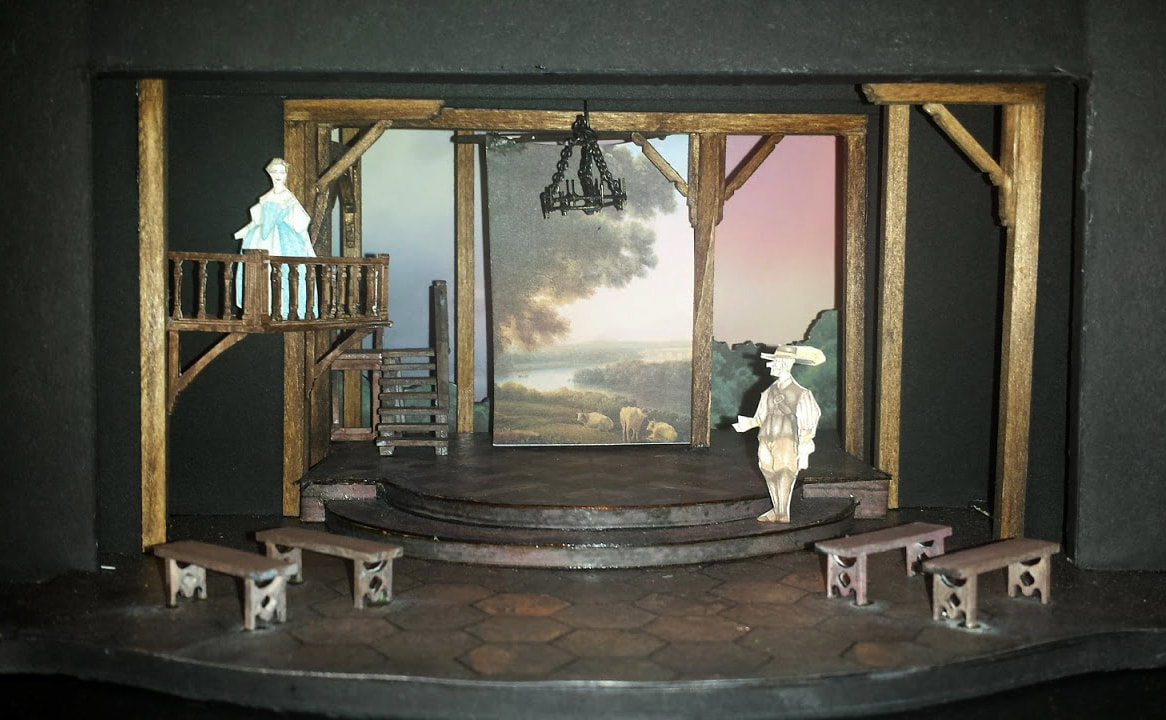
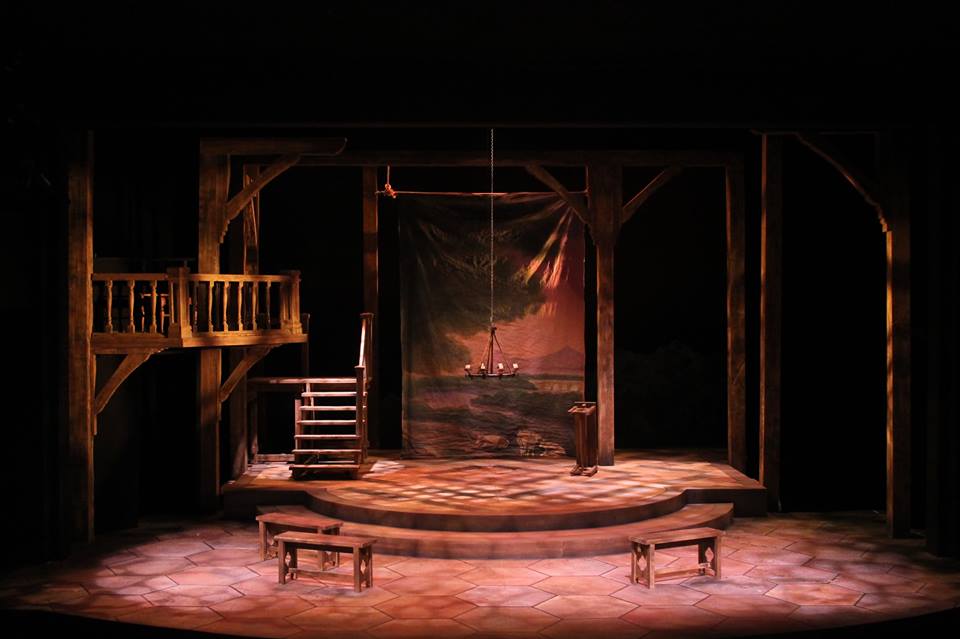




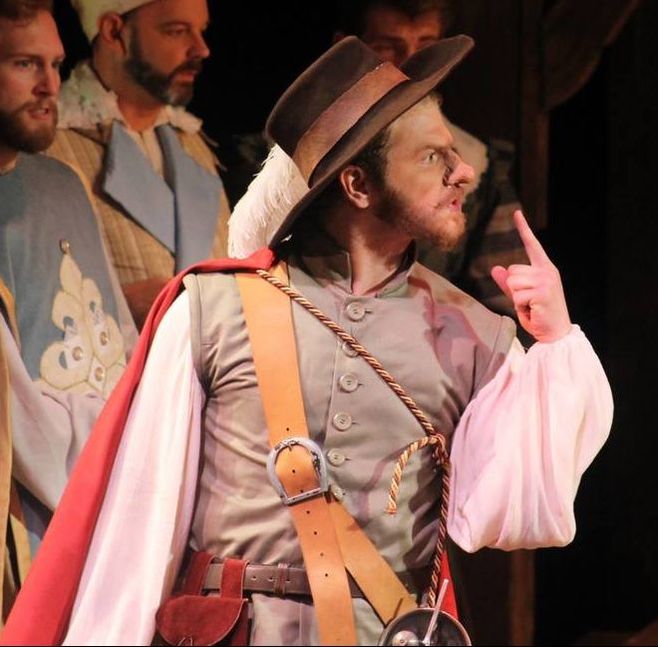











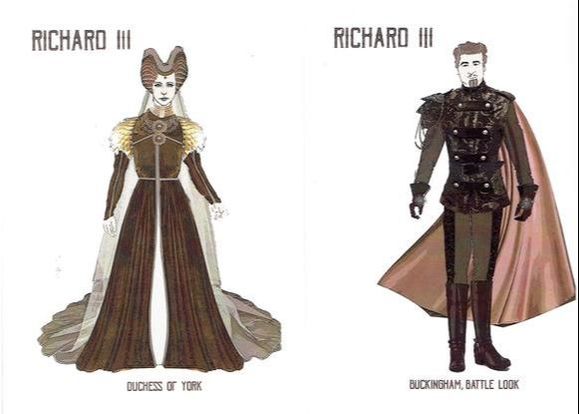


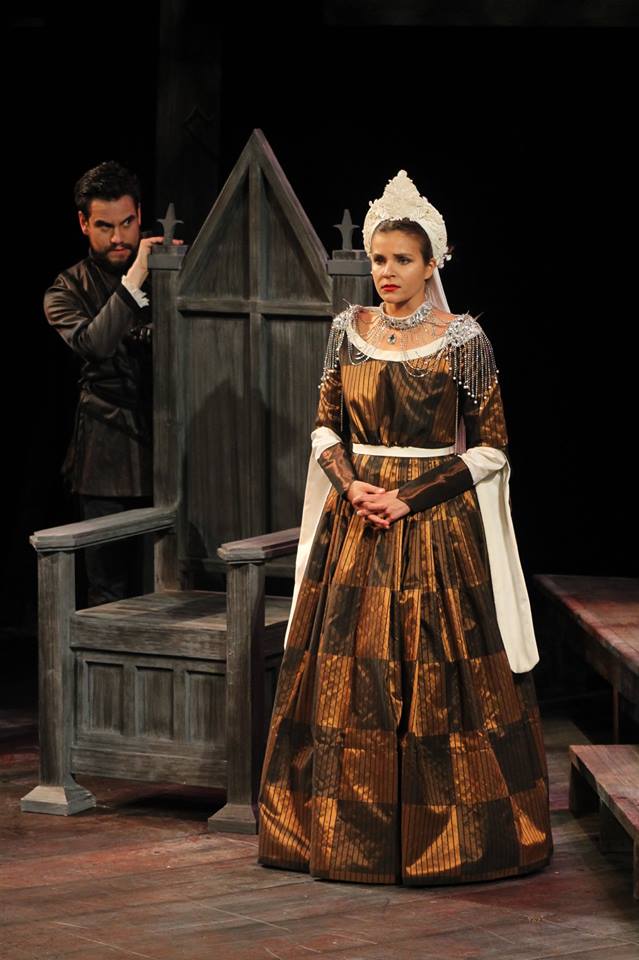






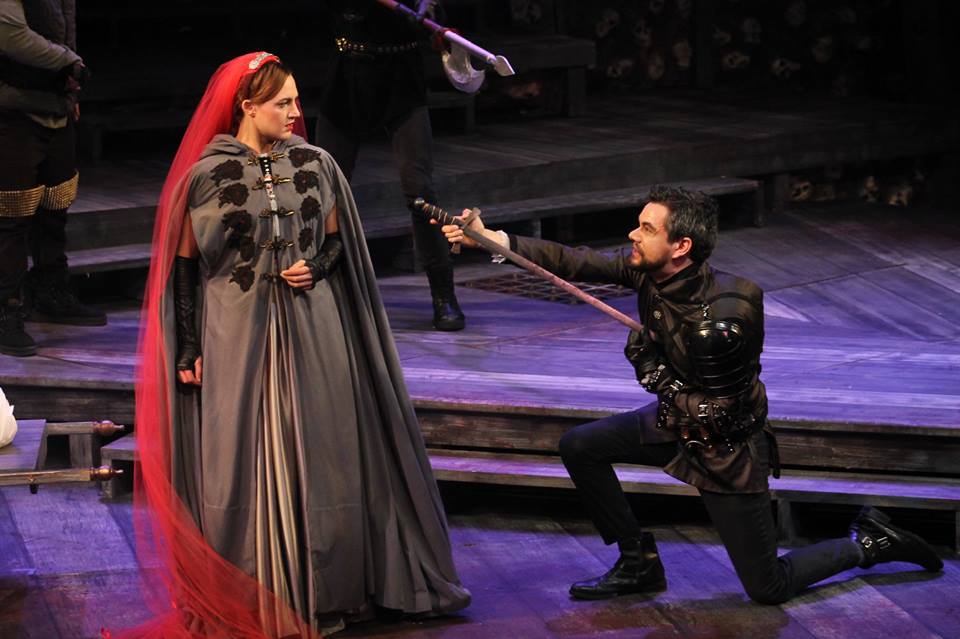

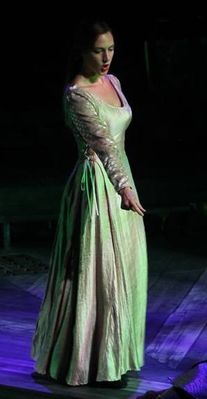







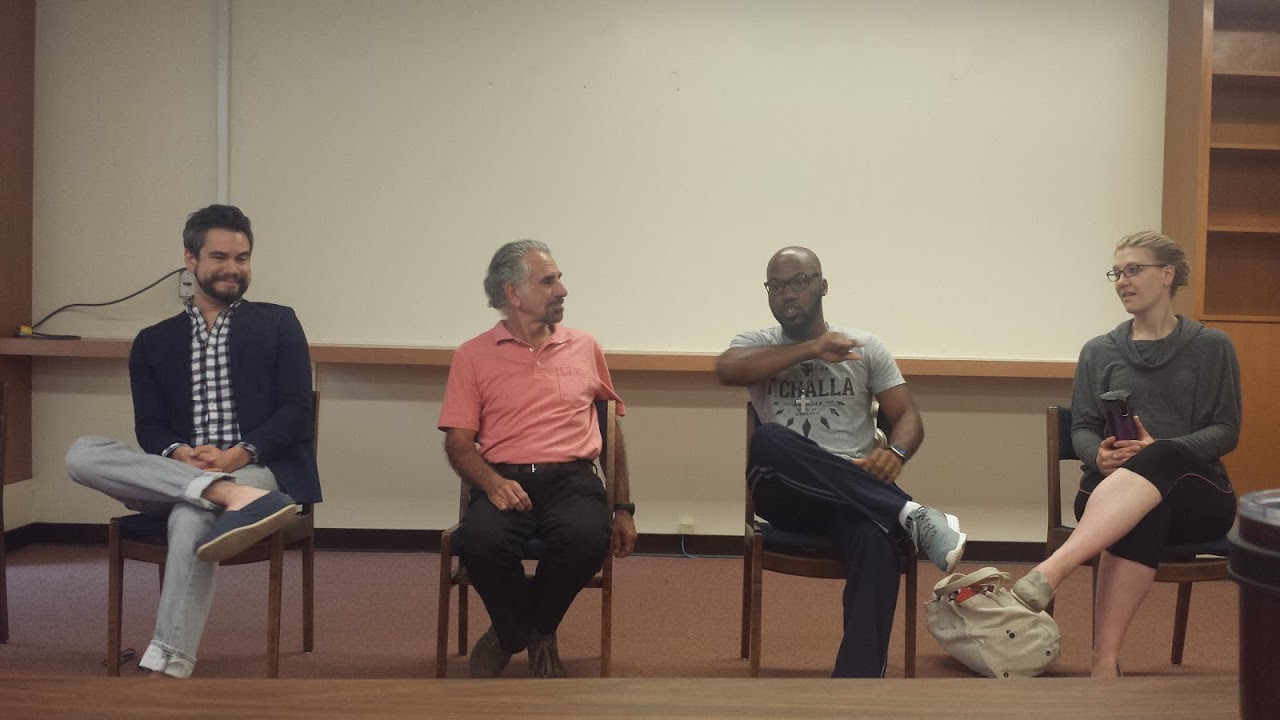





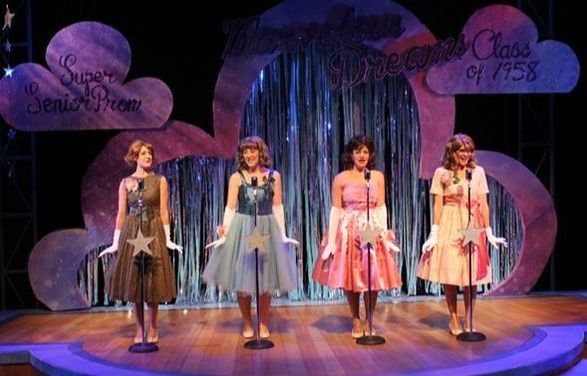


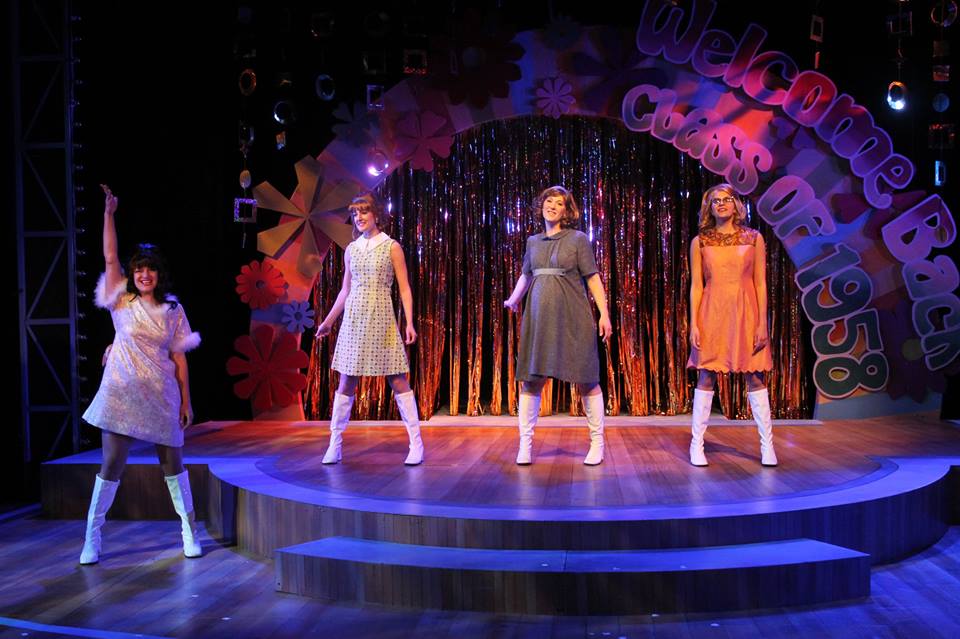





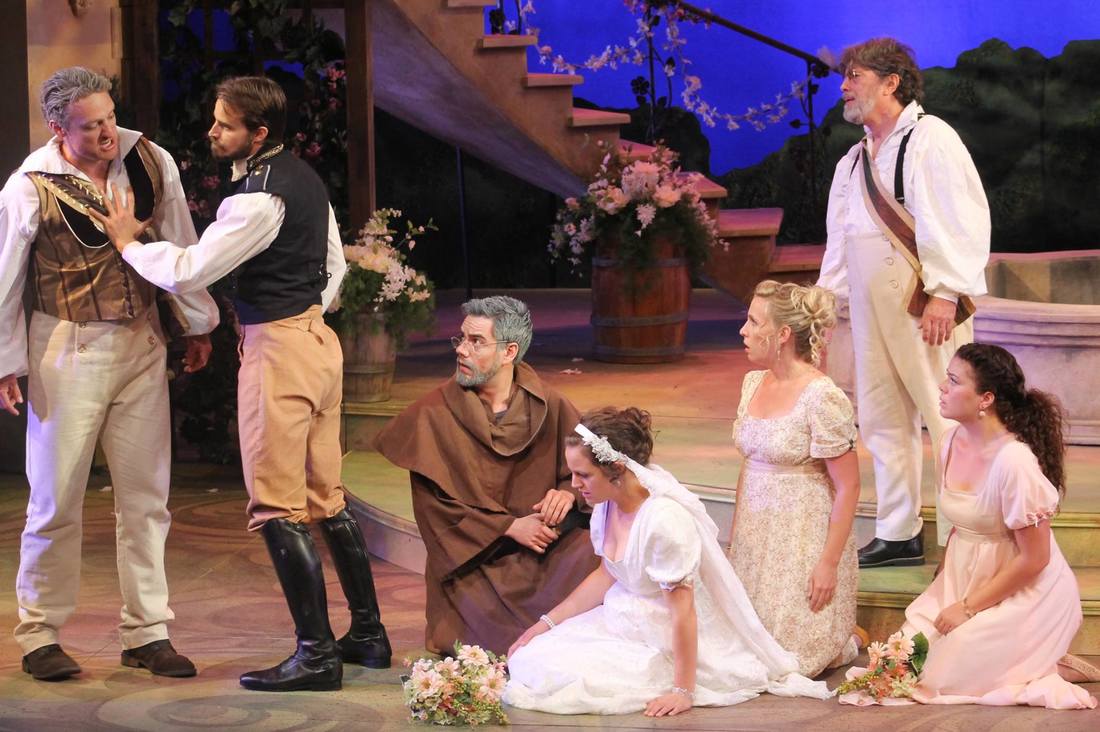






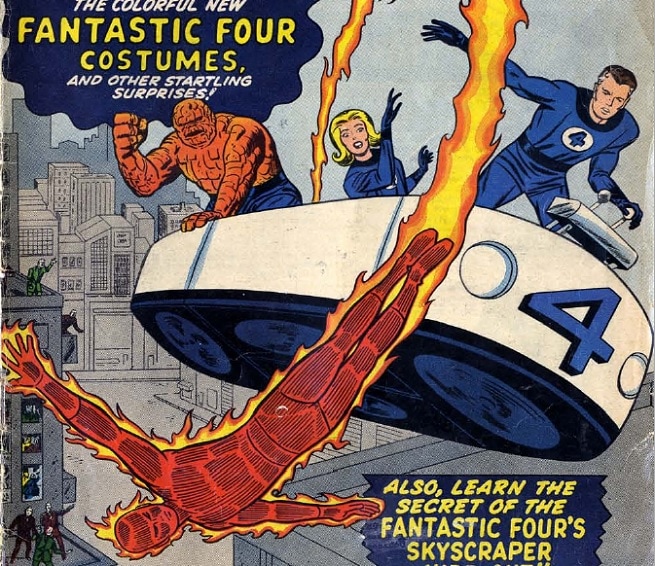


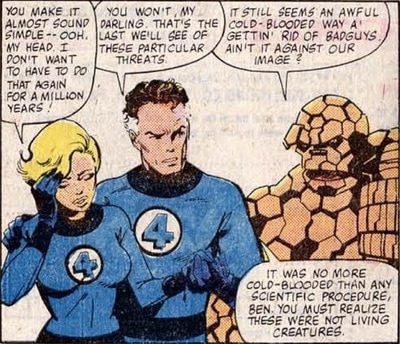
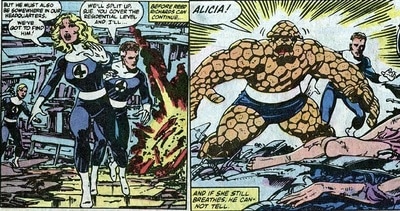




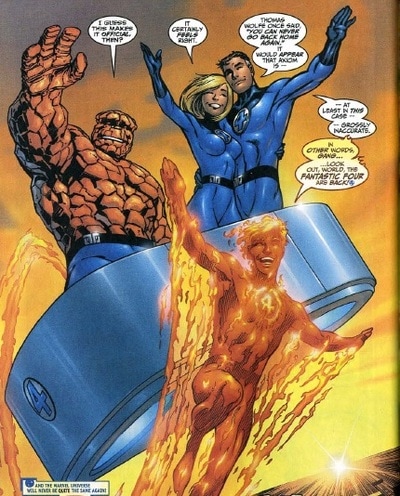



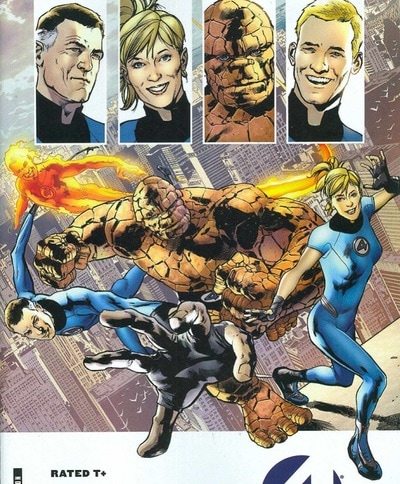
















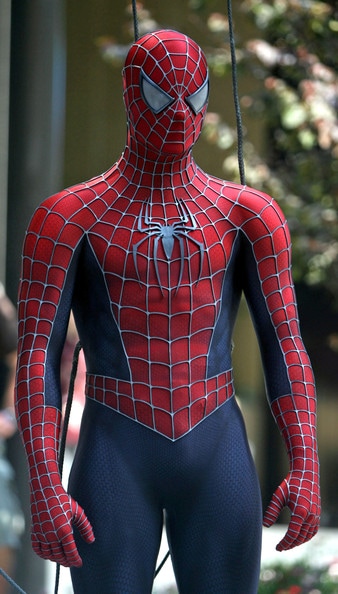

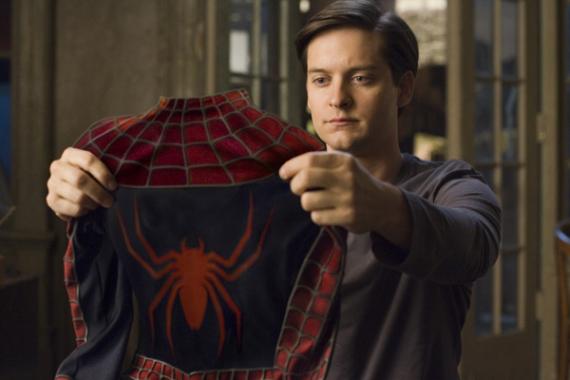







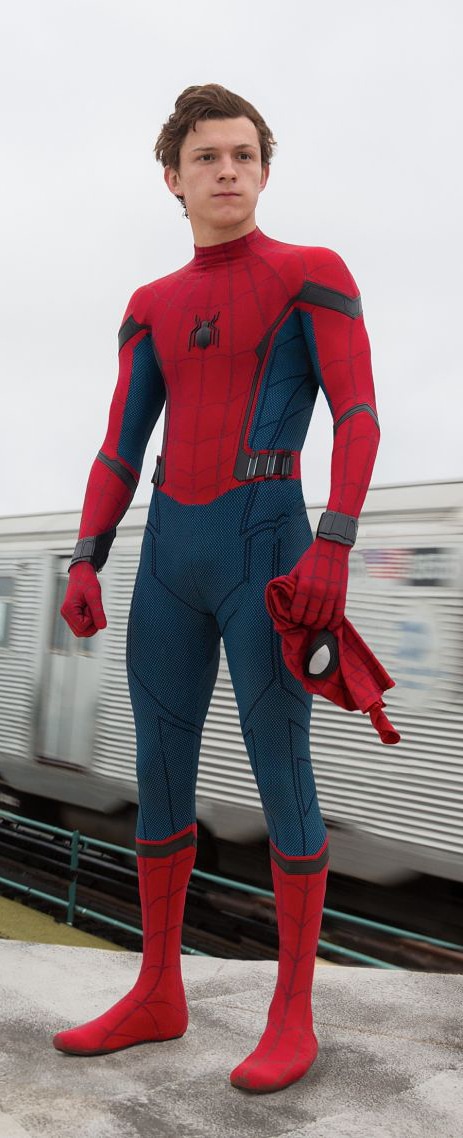






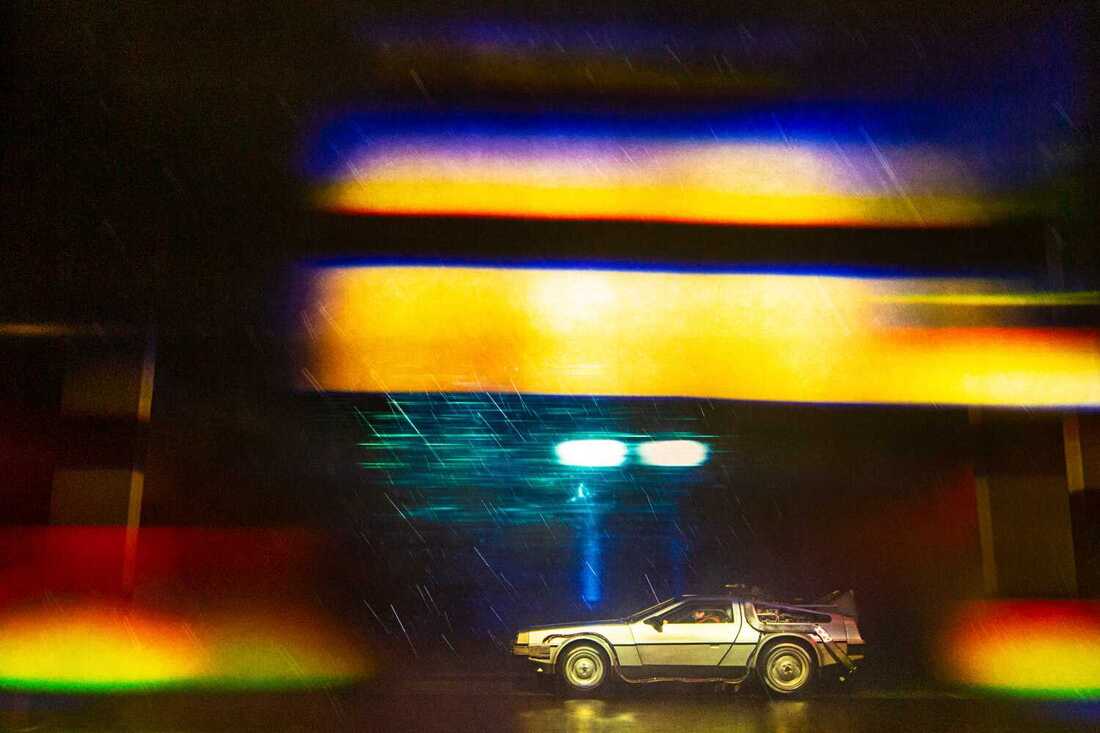










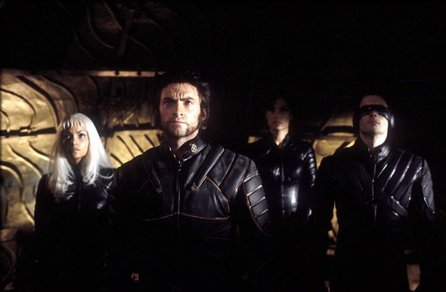







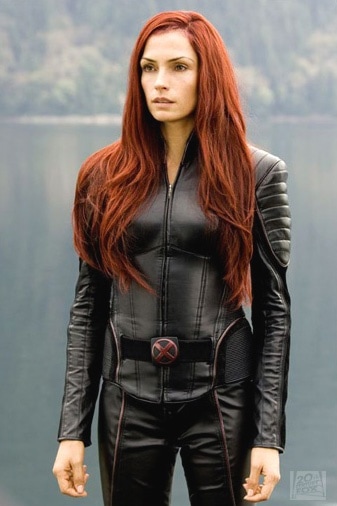



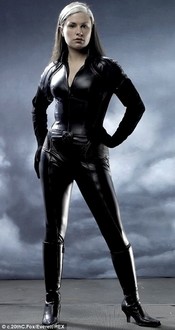







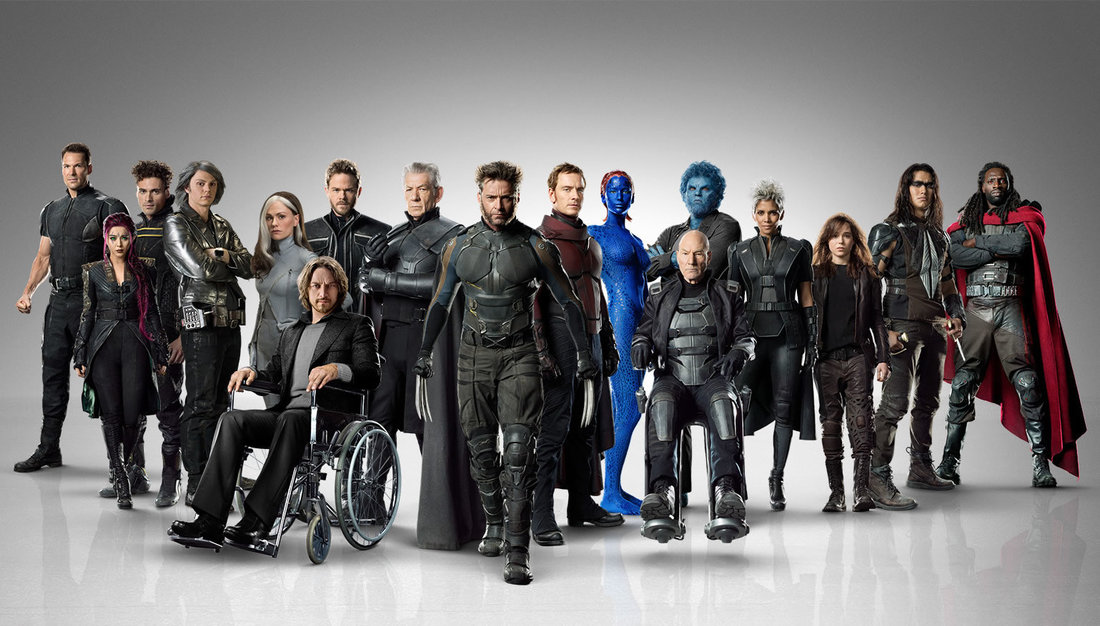










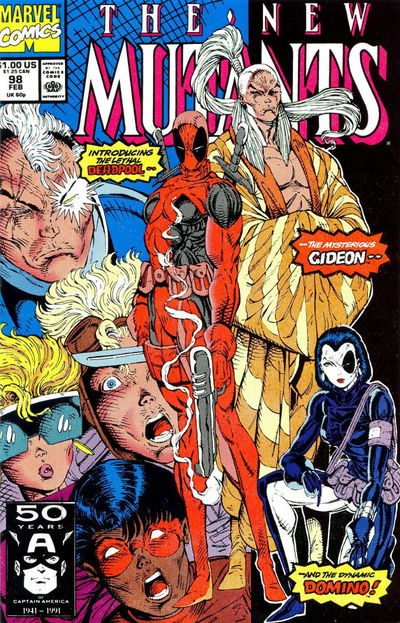













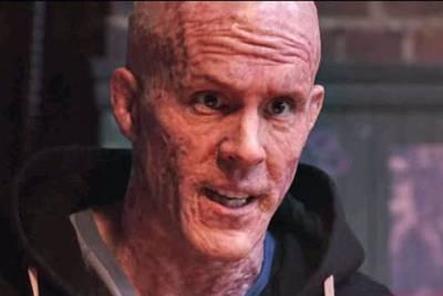












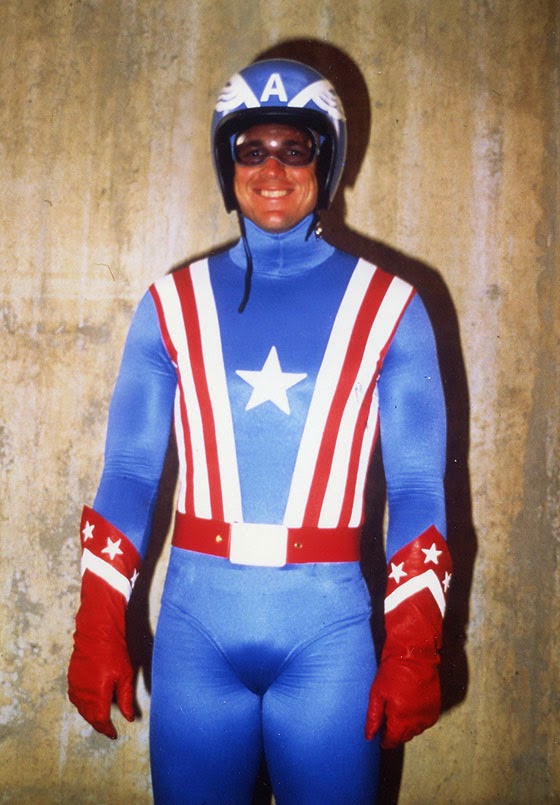



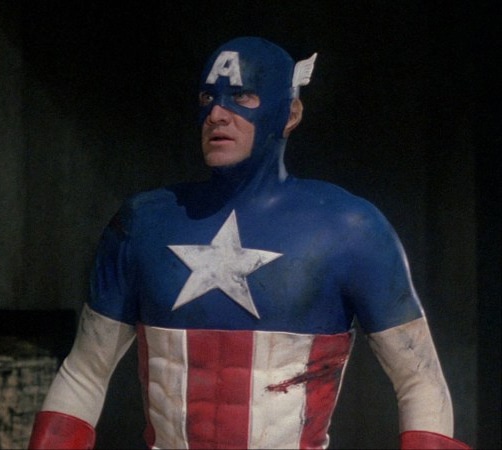


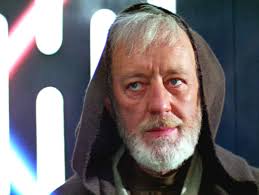



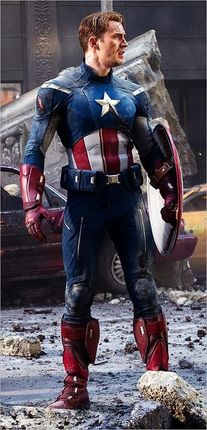
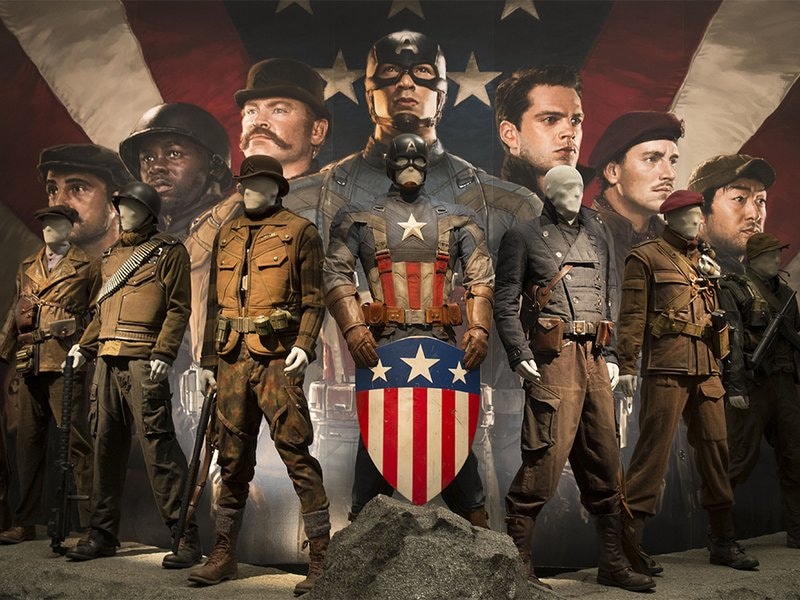





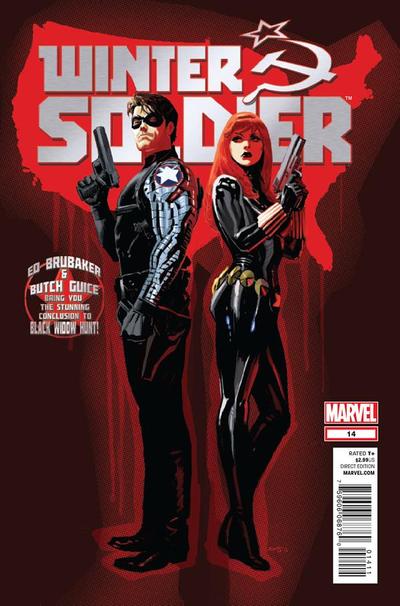



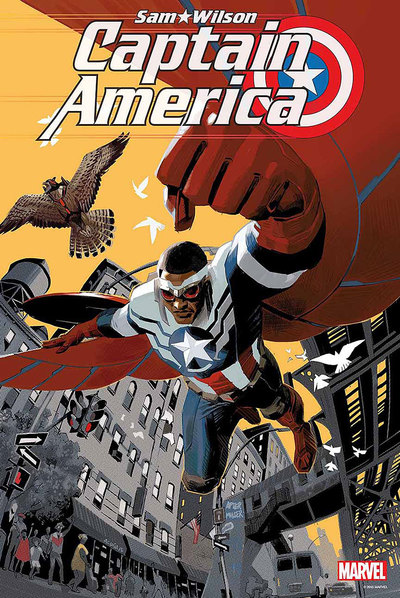





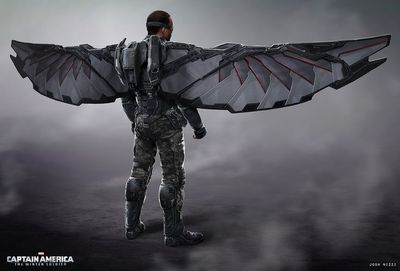
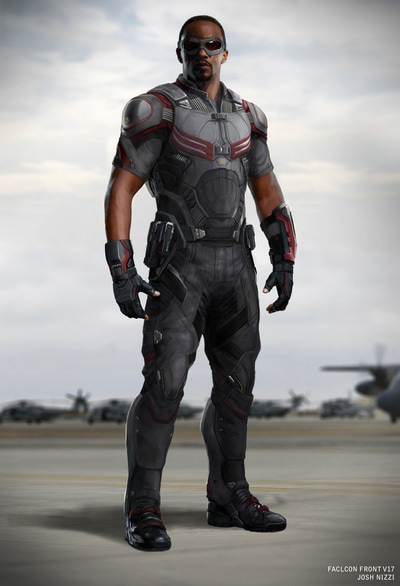



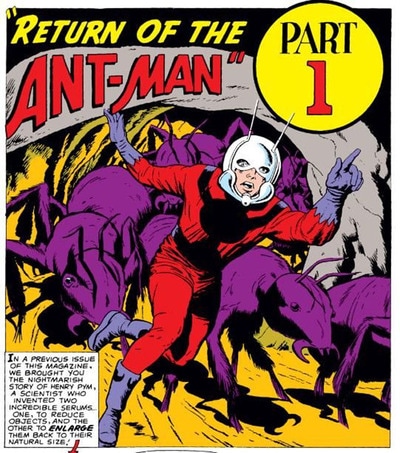

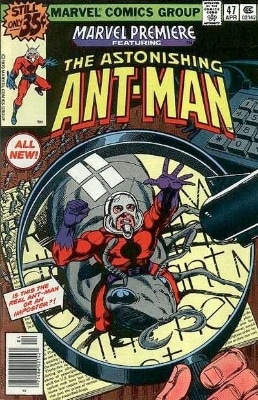












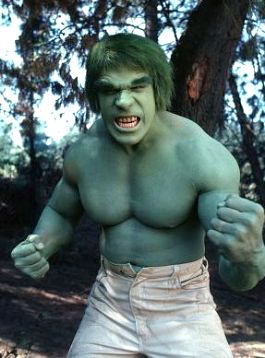






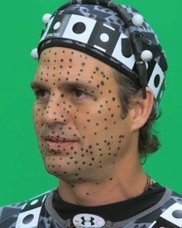





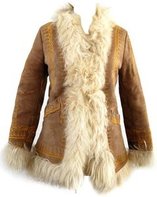



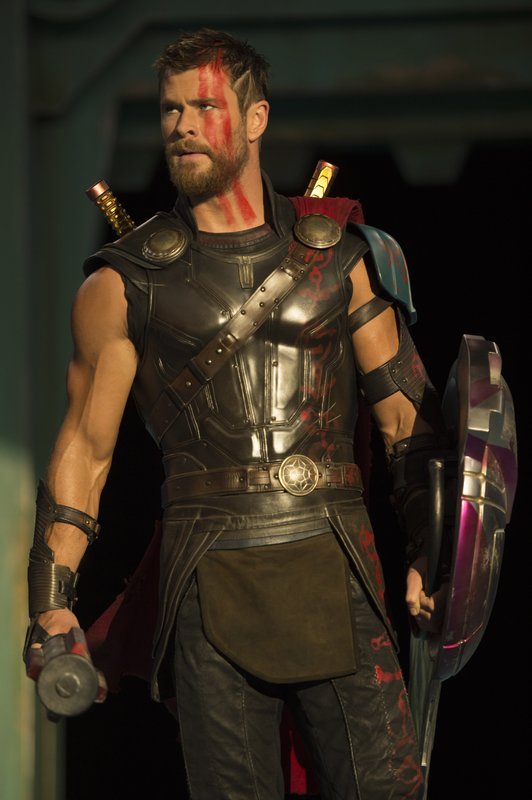
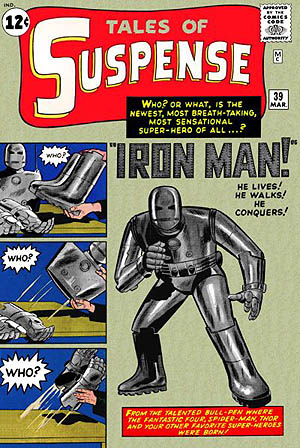

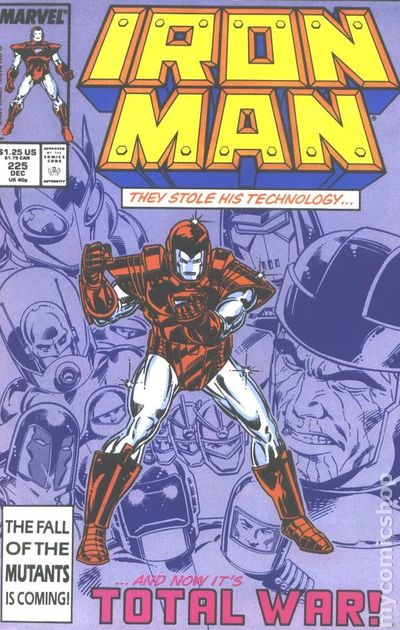

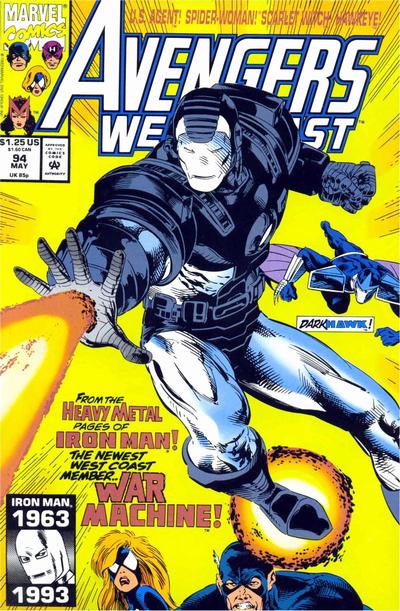



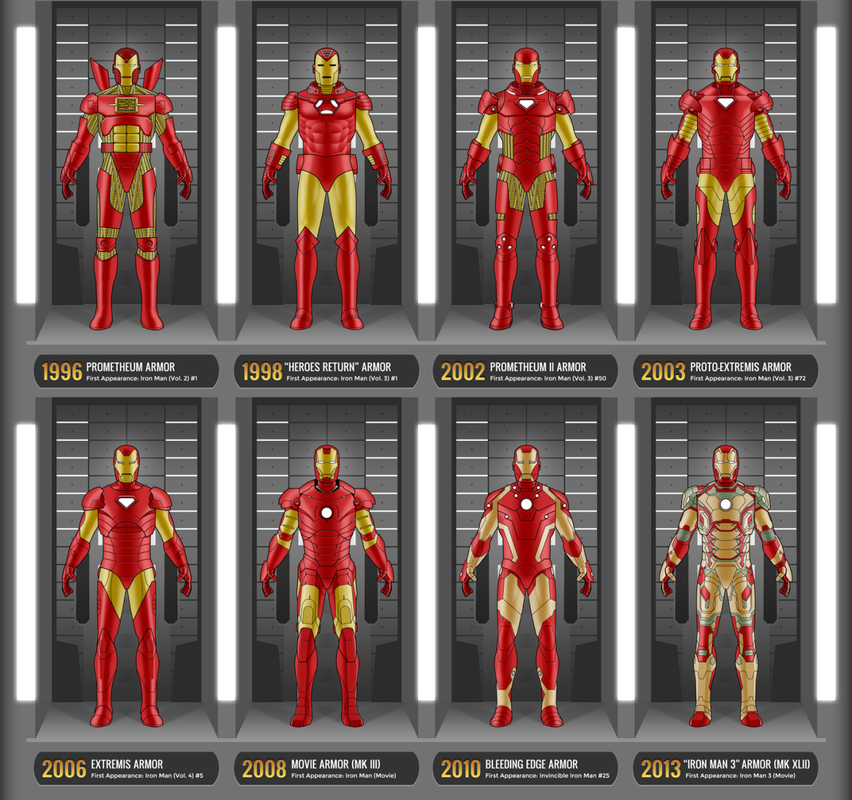
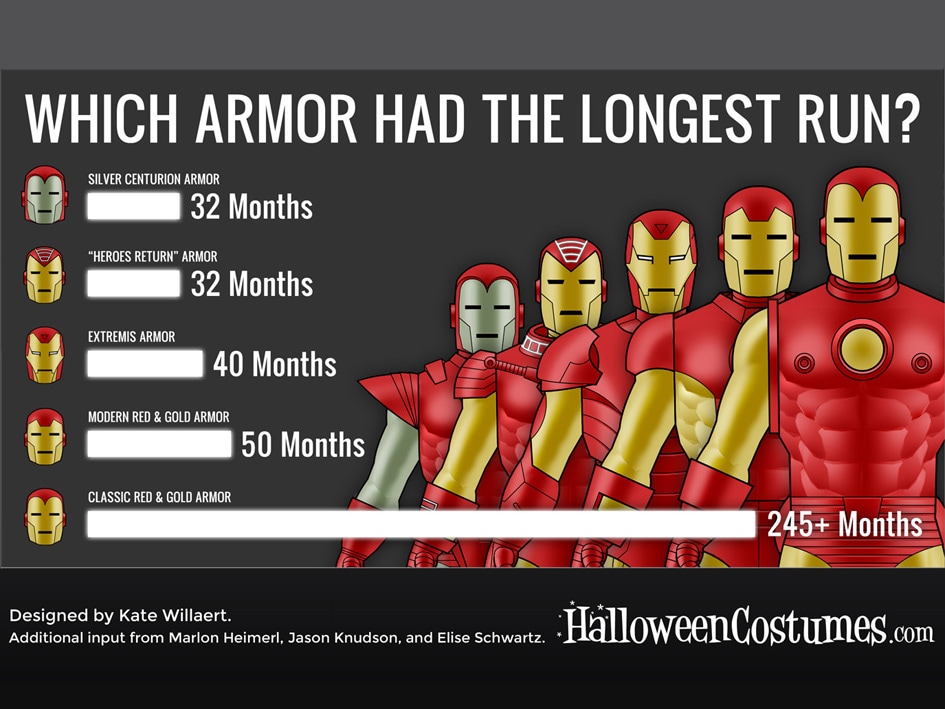
















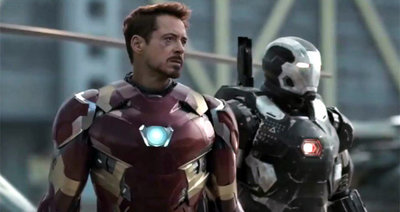







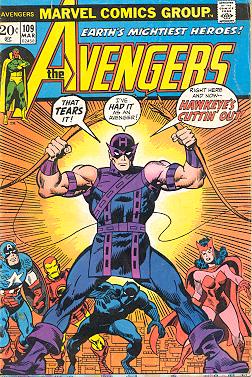

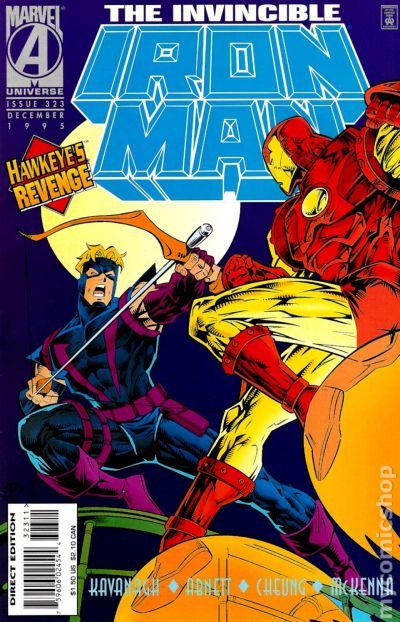


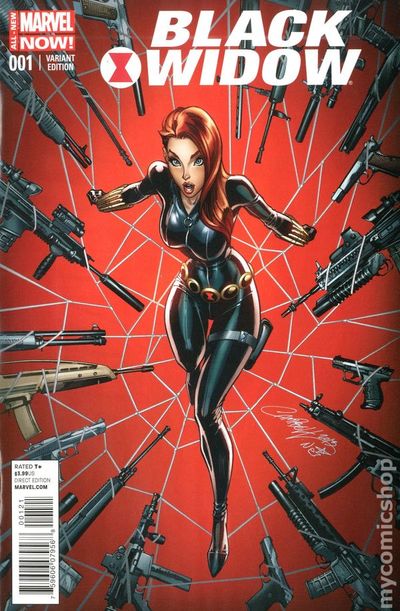



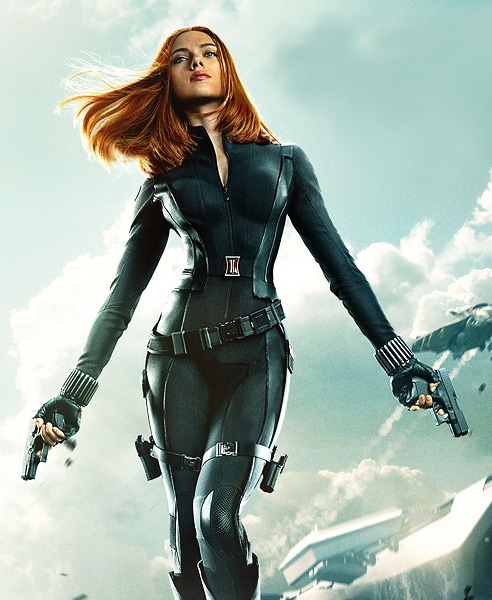






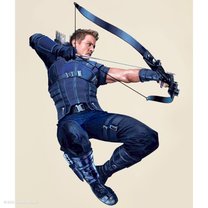

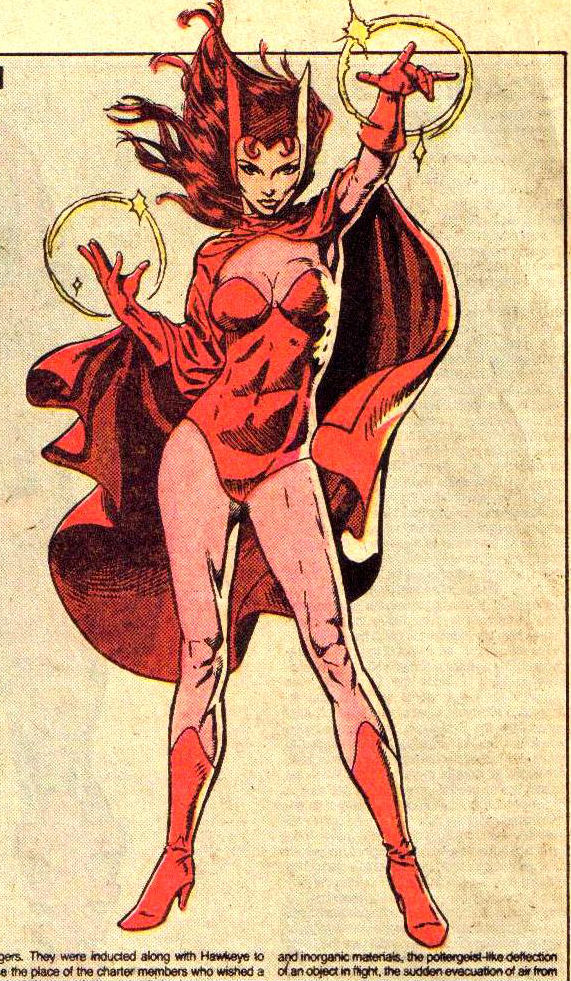


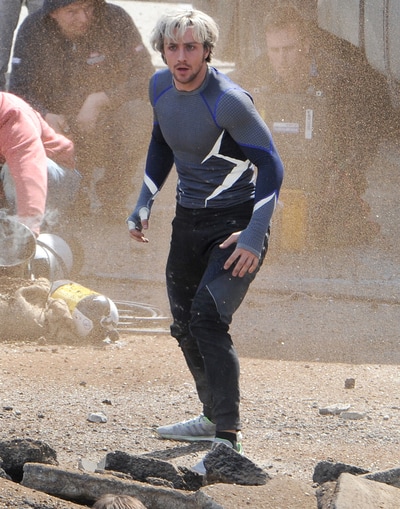






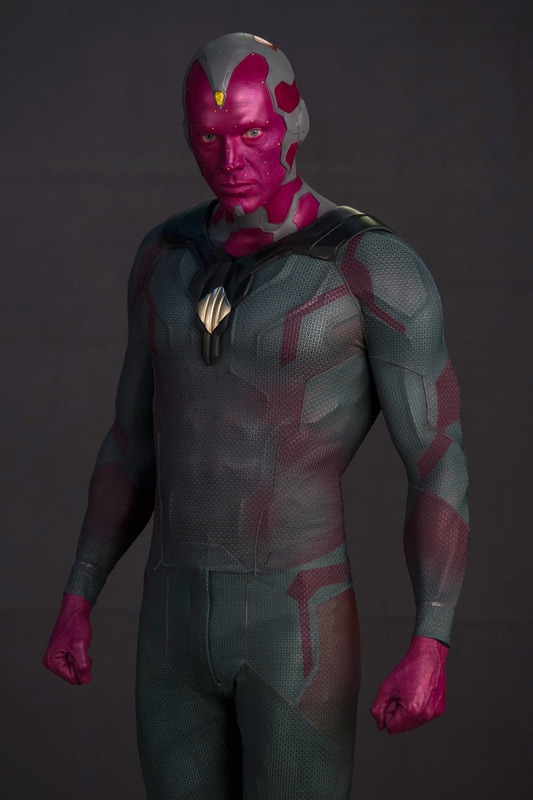








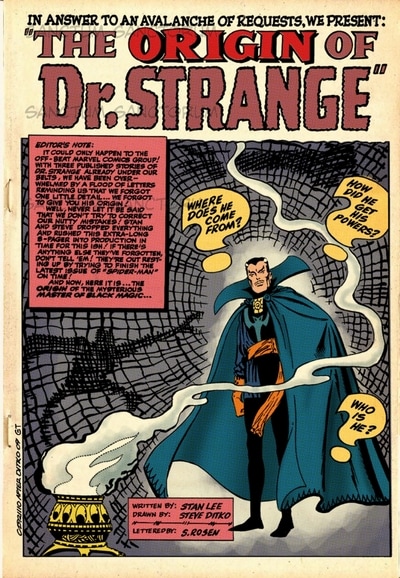



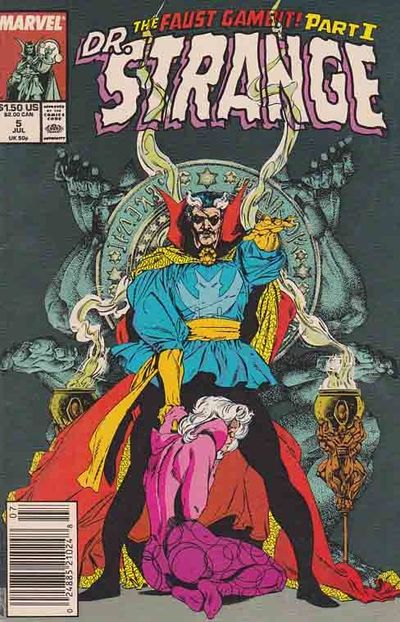



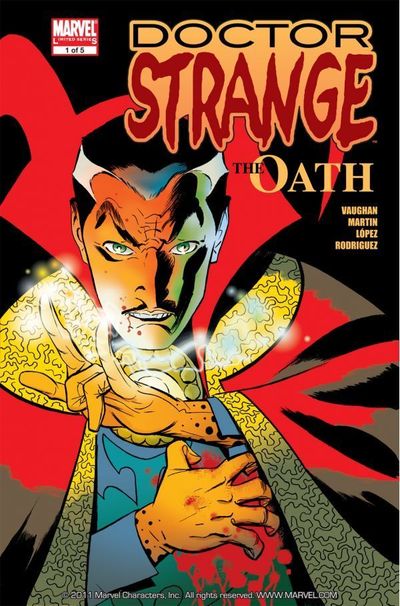



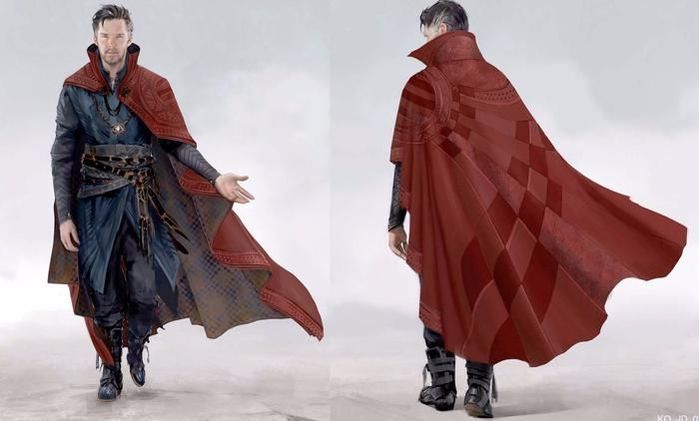
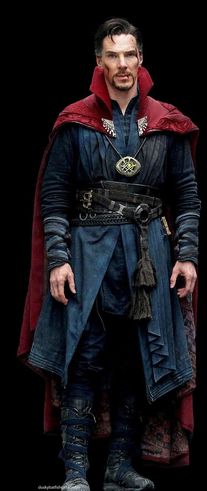
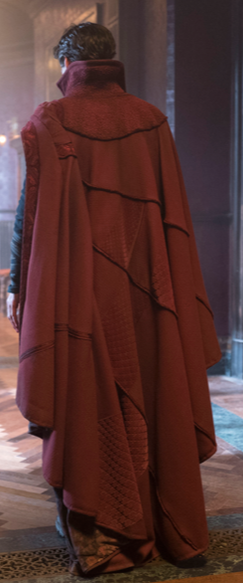
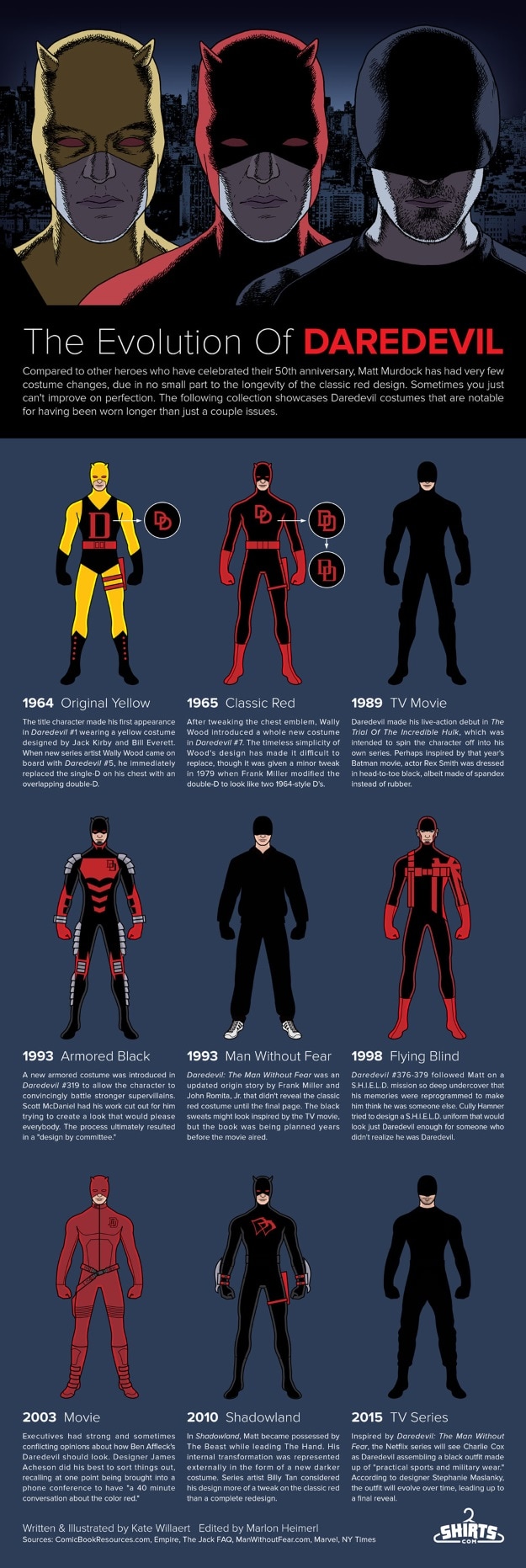



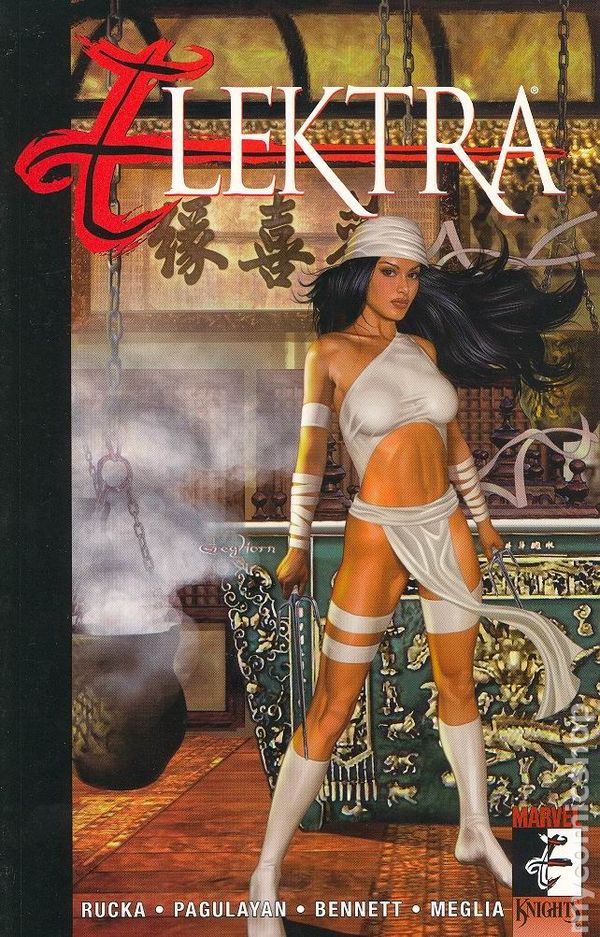

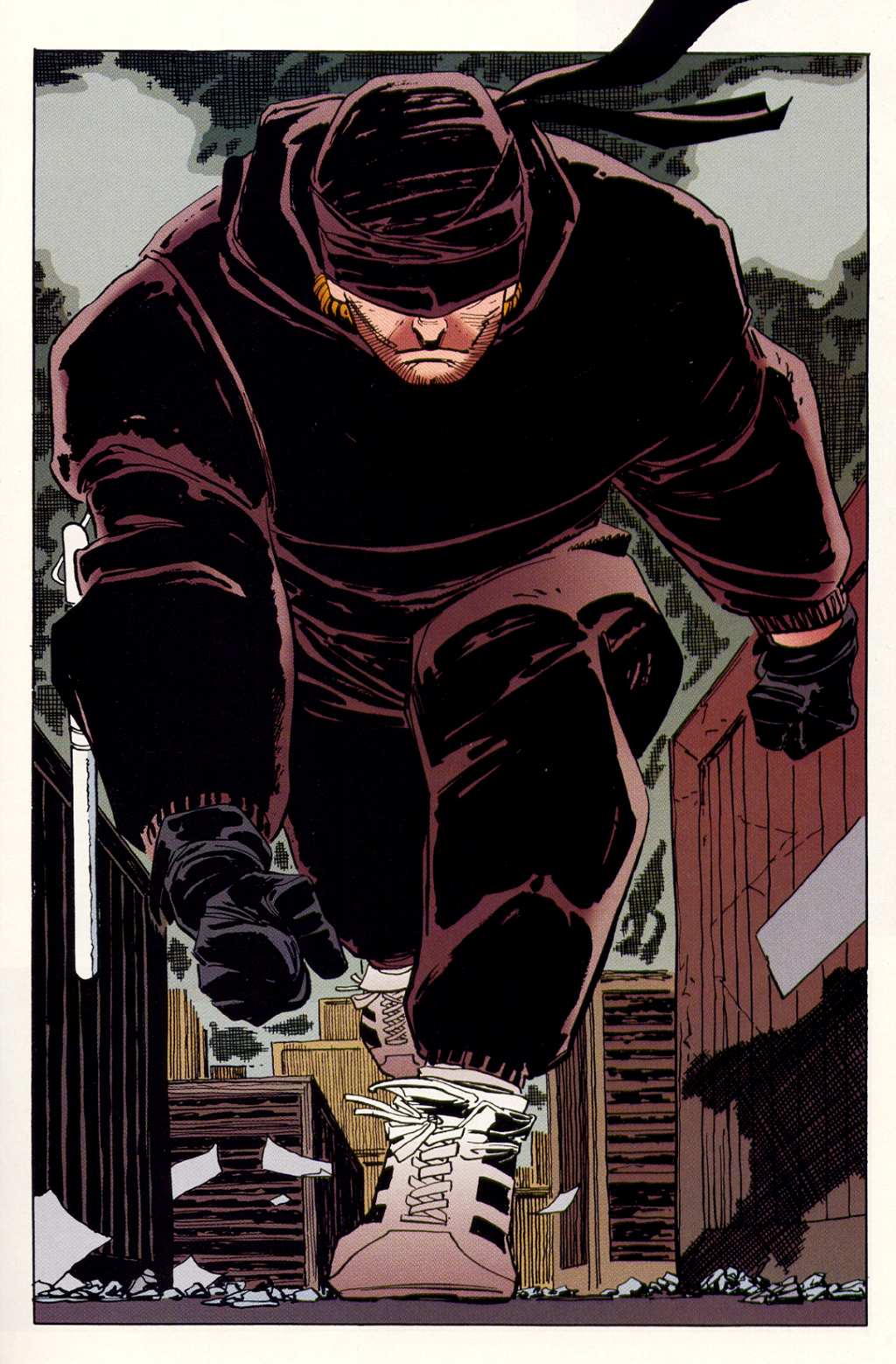


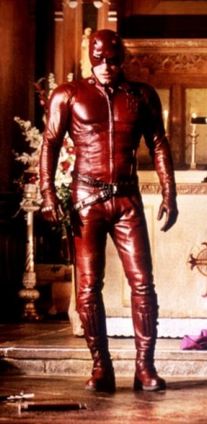








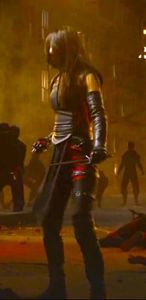



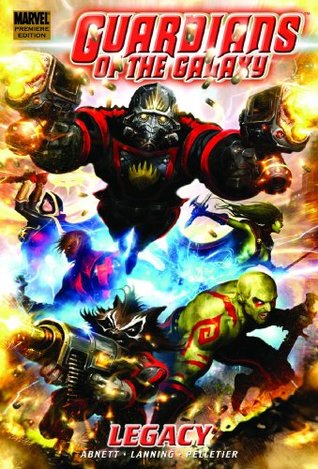















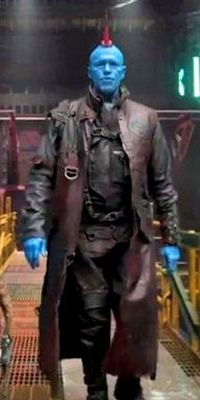




 RSS Feed
RSS Feed